AR VR Guide Save
A guide covering Augmented Reality (AR), Virtual Reality (VR), Mixed Reality(MR), and Extended Reality(XR). Including headsets such as Apple Vision Pro, HoloLens, PlayStation VR, and Quest 3.

AR/VR Guide

A guide covering Augmented Reality (AR) & Virtual Reality (VR) including the applications, libraries and tools that will make you a better and more efficient Augmented Reality (AR) & Virtual Reality (VR) development.
Note: You can easily convert this markdown file to a PDF in VSCode using this handy extension Markdown PDF.

Table of Contents
Getting Started with AR/VR
Augmented Reality (AR) is an interactive experience of a real-world environment where the objects that reside in the real world are enhanced by computer-generated perceptual information.
Virtual Reality (VR) is a simulated experience that can be similar to or completely different from the real world. The applications of virtual reality include entertainment (video games), education (medical or military training) and business (virtual meetings).
Mixed Reality (MR) is the merging of real and virtual worlds to produce new environments and visualizations, where physical and digital objects co-exist and interact in real time.
Extended Reality (XR) is a concept referring to all real-and-virtual combined environments and human-machine interactions generated by computer technology and wearables. Including augmented reality (AR), mixed reality (MR) and virtual reality (VR).
Developer Resources
AR/VR Training Courses
AR/VR Tools, Frameworks, and Hardware
Tools & Frameworks
RealityCapture is a state-of-the-art photogrammetry software solution that creates virtual reality scenes, textured 3D meshes, orthographic projections, geo-referenced maps and much more from images and/or laser scans completely automatically.
Reality Composer is a powerful tool that makes it easy for you to create interactive augmented reality experiences with no prior 3D experience. The Reality Converter quickly converts your existing 3D models to USDZ so it works seamlessly in our tools and on all AR-enabled iPhone and iPad devices.
ARKit is a set set of software development tools to enable developers to build augmented-reality apps for iOS developed by Apple. The latest version ARKit 3.5 takes advantage of the new LiDAR Scanner and depth sensing system on iPad Pro(2020) to support a new generation of AR apps that use Scene Geometry for enhanced scene understanding and object occlusion.
RealityKit is a framework to implement high-performance 3D simulation and rendering with information provided by the ARKit framework to seamlessly integrate virtual objects into the real world.
RealityUI is a Swift Package for creating familiar UI Elements and animations in a RealityKit rendered Augmented Reality or Virtual Reality scene.
SceneKit is a high-level 3D graphics framework that helps you create 3D animated scenes and effects in your iOS apps.
GPUImage framework is a BSD-licensed iOS library that lets you apply GPU-accelerated filters and other effects to images, live camera video, and movies. In comparison to Core Image (part of iOS 5.0), GPUImage allows you to write your own custom filters, supports deployment to iOS 4.0, and has a simpler interface. However, it currently lacks some of the more advanced features of Core Image, such as facial detection.
GPUImage3 is the third generation of the GPUImage framework, an open source project for performing GPU-accelerated image and video processing on Mac and iOS. The original GPUImage framework was written in Objective-C and targeted Mac and iOS, the second iteration rewritten in Swift using OpenGL to target Mac, iOS, and Linux, and now this third generation is redesigned to use Apple's Metal in place of OpenGL.
ARCore is a software development kit developed by Google that allows for augmented reality applications in the real world. These tools include environmental understanding, which allows devices to detect horizontal and vertical surfaces and planes. It also includes motion tracking, which lets phones understand and track their positions relative to the world. Also ARCore’s Light Estimation API lets your digital objects appear realistically as if they’re actually part of the physical world.
Adobe Scantastic is a tool that makes the creation of 3D assets accessible to everyone. It can be used with just a mobile device (combined with Adobe's server-based photogrammetry pipeline), users can easily scan objects in their physical environment and turn them into 3D models which can then be imported into tools like Adobe Dimension and Adobe Aero.
Adobe Aero is a tool that helps you build, view, and share immersive AR experiences. Simply build a scene by bringing in 2D images from Adobe Photoshop and Illustrator, or 3D models from Adobe Dimension, Substance, third-party apps like Cinema 4D, or asset libraries like Adobe Stock and TurboSquid. Aero optimizes a wide array of assets, including OBJ, GLB, and glTF files, for AR, so you can visualize them in real time.
Vuforia is a comprehensive, scalable enterprise AR platform. Our wide-ranging solution suite ensures that we can provide the right AR technology to every customer based on their business needs.
Vuforia Studio is a tool that allows anyone to create beautiful 3D augmented reality (AR) experiences in a matter of minutes with no coding required.
SceneView is a 3D and AR Android Composable and View with Google Filament and ARCore. This is a Sceneform replacement in Kotlin.
Polycam is the world's most popular LiDAR 3D scanning app for iOS(iPhone/iPad), Web, and Android. It let's you scan the world around you with your mobile device, DSLR camera, or drone to get beautiful, accurate 3D models.
3D Scanner App for Mac is a desktop tool for processing photos and videos into 3D models using the power of Photogrammetry; which makes it perfect for 3D Design, CAD, Architecture, Games Assets, AR, VR, XR. It shares USDZ models via iMessage to let friends and family see your models in Augmented Reality.
OpenVX™ is an open-source, royalty-free standard for cross platform acceleration of computer vision applications. OpenVX enables performance and power-optimized computer vision processing, especially important in embedded and real-time use cases such as face, body and gesture tracking, smart video surveillance, advanced driver assistance systems (ADAS), object and scene reconstruction, augmented reality, visual inspection, robotics and more.
OpenXR is an open, royalty-free standard for access to virtual reality and augmented reality platforms and devices.
OpenXR™ SDK is a Software Development Kit that contains OpenXR headers, as well as source code and build scripts for the OpenXR loader.
NVIDIA Flex is a particle-based simulation library designed for real-time applications.
ARToolKit is a fast and modern open source tracking and recognition SDK which enables computers to see and understand more in the environment around them. It's built from the ground up using modern computer vision techniques.
ALVR(Air Light VR) is a Stream VR games from your PC to your headset via Wi-Fi. ALVR uses technologies like Asynchronous Timewarp and Fixed Foveated Rendering for a smoother experience.
ARmedia is a plugin tool that makes it easy to develop and create AR experiences without coding.
Wikitude is a Cross-platform augmented reality SDK to create high-performing object tracking AR experiences using 3D models as an input method (CAD, glTF 2.0 and more) for multiple devices and operating systems.
Kudan AR SDK is a Professional AR SDK to develop compelling applications for mobile devices.
Kundan is a tool that provides proprietary Artificial Perception technologies based on SLAM to enable use cases with significant market potential and impact on our lives such as autonomous driving, robotics, AR/VR and smart cities.
OVR Toolkit is a utility application designed to make viewing the desktop in VR simple and fast, it allows for viewing the desktop within VR, placing desktop windows around the world, mouse input, typing with a virtual keyboard, and quickly switching between windows.
OpenVR is an API and runtime that allows access to VR hardware(Steam Index, HTC Vive, and Oculus Rift) from multiple vendors without requiring that applications have specific knowledge of the hardware they are targeting.
OpenVR Benchmark on Steam is the first benchmark tool for reproducibly testing your real VR performance, rendering inside of your VR headset.
OpenHMD is open source API and drivers that supports a wide range of HMD(head-mounted display) devices such as Oculus Rift, HTC Vive, Sony PSVR, and others.
StereoKit is an easy-to-use open source mixed reality library for building HoloLens and VR applications with C# and OpenXR.
Monado is the first OpenXR™ runtime for GNU/Linux. Monado aims to jump-start development of an open source XR ecosystem and provide the fundamental building blocks for device vendors to target the GNU/Linux platform.
Libsurvive is a set of tools and libraries that enable 6 dof tracking on lighthouse and vive based systems that is completely open source and can run on any device. It currently supports both SteamVR 1.0 and SteamVR 2.0 generation of devices and should support any tracked object commercially available.
Simula is a VR window manager for Linux that runs on top of Godot. It takes less than 1 minute to install. Simula is officially compatible with SteamVR headsets equipped with Linux drivers (e.g. HTC Vive, HTC Vive Pro, & Valve Index). We have also added experimental support to OpenXR headsets that have Monado drivers (e.g. North Star, OSVR HDK, and PSVR). Some people have gotten the Oculus Rift S to run Simula via OpenHMD (see here).
Unreal Engine 5 Development

Unreal Engine 5 is a game engine developed by Epic Games with the world's most open and advanced real-time 3D creation tool. Continuously evolving to serve not only its original purpose as a state-of-the-art game engine, today it gives creators across industries the freedom and control to deliver cutting-edge content, interactive experiences, and immersive virtual worlds.

Unreal Engine 5 with Big City Sample Project

Unreal Engine Twinmotion. Source: Unreal Engine

Unreal Engine 5 Project browser

Unreal Engine 5 Vehicle Project Demo

Unreal Engine Marketplace
Unreal Engine Tools
Blueprint Visual Scripting is a complete gameplay scripting system in Unreal Engine based on the concept of using a node-based interface to create gameplay elements from within Unreal Editor. As with many common scripting languages, it is used to define object-oriented (OO) classes or objects in the engine.

Blueprint Visual Scripting UI
Datasmith is a collection of tools and plugins that bring entire pre-constructed scenes and complex assets created in a variety of industry-standard design applications into Unreal Engine.
Lumen is an Unreal Engine 5 feature that uses multiple ray tracing methods to solve Global Illumination and Reflections. Screen traces are done first, followed by a more reliable method. It uses Software Ray Tracing through Signed Distance Fields by default, but can achieve higher quality on supporting video cards when Hardware Ray Tracing is enabled.
Nanite is Unreal Engine 5's new virtualized geometry system which uses a new internal mesh format and rendering technology to render pixel scale detail and high object counts. It intelligently does work on only the detail that can be perceived and no more.
Niagara VFX System is one of two tools you can use to create and adjust visual effects (VFX) inside Unreal Engine 5 (UE5). Before Niagara, the primary way to create and edit visual effects in UE4 was to use Cascade. It has many of the same of particle manipulation methods that Cascade offers, the way you interact and build visual effects with Niagara is vastly different.
Chaos Physics is a Beta feature that is the light-weight physics simulation solution used in Fortnite, and it includes the following major features.
- RBAN (Rigid Body Animation Nodes)
- Destruction
- Cloth
- Ragdoll
- Vehicles
MetaHuman Creator is a free cloud-based app that empowers anyone to create photorealistic digital humans, complete with hair and clothing, in minutes. MetaHumans come fully rigged and ready to animate in your Unreal Engine projects.
Twinmotion is a real-time 3D immersion software that produces high-quality images, panoramas and standard or 360° VR videos in seconds. Developed for architecture, construction, urban planning and landscaping professionals.
Bridgew by Quixel is a gateway to create a world of 3D content right inside the Unreal Engine. it includes Megascans—the world's largest library of AAA, cinema-quality assets based on real-world scan data.
Unreal Engine Marketplace is Unreal Engine's Store that has a library Of Textures, Models, Animations, Tutorials, and More for creating amazing 3D projects and games.
UnrealBuildTool (UBT) is a tool that manages the process of building UE4 source code across a variety of build configurations.
UnrealHeaderTool (UHT) is a custom parsing and code-generation tool supporting the UObject system.
AutomationTool is a generic system used to automate processes, including testing and building games.
Proxy Geometry Tool is a tool-set that was developed as a way to increase your Unreal Engine 4 (UE4) project's performance while keeping the visual quality of your project uneffected.
Replay System is a tool which can record gameplay for later viewing. This feature is available in all games, from live, multiplayer games played on dedicated servers, to single-player games, and even including Play-In-Editor sessions. At a high level, the Replay system works by using a DemoNetDriver to read data drawn from the built-in replication system, similar to how a NetDriver operates in a live, networked gameplay environment.
Developer Resources
Note: you will need to create an Epic Games account to download Unreal Engine.
Unity Development
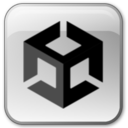
Unity is a cross-platform game development platform. Unity can be used to build high-quality 3D and 2D games, deploy them across mobile, desktop, VR/AR, consoles or the Web, and connect with loyal and enthusiastic players and customers. Checkout the Unity Manual to get started on your Unity projects.

Unity Terrain project. Source: Unity
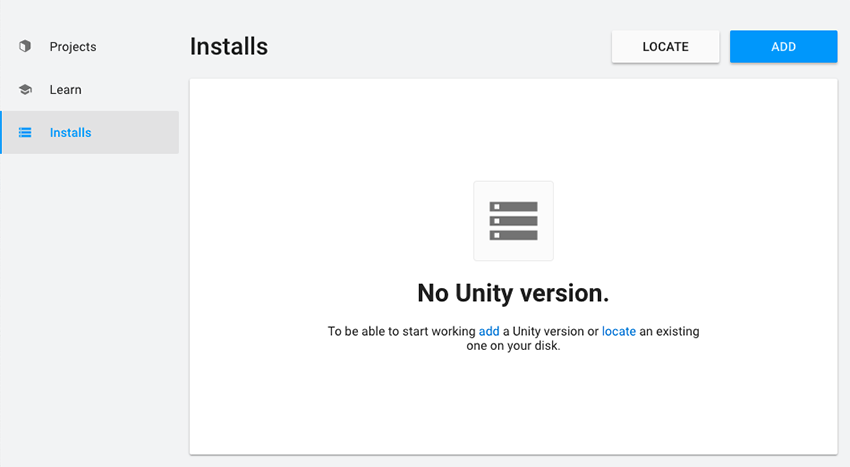
Unity Hub Installs

Unity Asset Store
Unity Tools
Unity Hub is a tool that helps manage multiple installations of the Unity Editor, create new projects, and access your work.
Unity Asset Storeis Unity's Store that has a library Of Textures, Models, Animations, Tutorials, and More for creating amazing 3D projects and games.
Unity Plus is a version of Unity for small businesses and serious hobbyists get more functionality and training resources to power up their projects.
Unity Pro is a version of Unity to create and operate amazing applications and immersive experiences with a complete solution for professionals across industries.
Unity Enterprise is a version of Unity for large teams creating at scale, Unity Enterprise delivers comprehensive technology, resources, and support that fuel innovation, reduce risk, and power your success.
Unity XR is a plug-in framework that enables XR providers to integrate with the Unity engine and make full use of its features.
Unity MARS is a tool that helps you create augmented reality (AR) apps with better workflows and purpose built authoring tools.
Unity Build Server is a tool that offloads your Unity project builds to network hardware, empowering your creative team to iterate more, produce higher quality products, and ship on time.
Unity Teams is a tool that helps you and your team create together, faster. It makes it simple to save, share and sync your Unity projects with anyone.
Unity Automated QA is a tool that shortens the development feedback loop with on-demand tests that anyone on your team can create and run without writing code.
Unity Simulation Pro is a tool that unlocks the true power of scalable simulations through a simulation-optimized version of the Unity runtime.
Unity Forma is a tool that brings the power of real-time 3D to your marketing. It turns 3D product data into interactive 3D configurators, stunning images and more.
Unity Reflect is a tool that helps create an experience immersive and collaborative real-time 3D environments, including in AR and VR, for better decision-making across your entire project lifecycle.
Unity Reflect Develop is a tool that builds your own custom applications to address any problem across the entire building and infrastructure lifecycle for internal or commercial deployment.
Unity ArtEngine is Unity’s material authoring tool. Harnessing the power of assisted creation, the tool helps creators accelerate production pipelines.
Unity Machine Learning Agents is a tol that helps train and embed intelligent agents by leveraging state-of-the-art deep learning technology.
Unity Essential Success is a tool that is your dedicated Support Coordinator and experienced Unity engineers are ready to help.
Bolt Visual scripting is a tool in Unity empowers creators to develop gameplay mechanics or interaction logic with a visual, graph-based system, instead of writing traditional lines of code.
VisualLive is a tool for construction professionals can visualize designs and collaborate in real-time by overlaying large BIM and CAD files onto jobsites using AR.
Professional Services: Optimization Accelerator is atool that boosts your project and your productivity in a four-day sprint with hands-on guidance from a Unity engineer. It will help you analyze performance problems, test solutions, and implement improvements.
Odin Inspector Enterprise is a tool that optimizes your project workflows and save thousands of development hours.
Multiplay is a resilient, multicloud hybrid server hosting and matchmaking platform without having to build and maintain your own infrastructure. Proven at scale in some of the world’s biggest games.
Vivox is a voice and text comms tool that boosts player engagement, retention rates and create immersive multiplayer experiences by leveraging an easy-to-implement, feature-rich voice and text chat service.
Relayᴮᴱᵀᴬ is a tool that provides a great multiplayer gaming experiences with Unity’s Relay service that's now in open beta.
Lobbyᴮᴱᵀᴬ is a tool that connects your players for great multiplayer gaming experiences with Lobby that's now in Open Beta.
Cloud Codeᴮᴱᵀᴬ is a tool that runs your game logic in the cloud as serverless functions and interact with other backend services.
Cloud Saveᴮᴱᵀᴬ is a tool that builds better player experiences by storing game data to the cloud.
Furioos is a tool that streams fully interactive 3D experiences from Unity, other real-time 3D platforms, and Windows applications with peak visual quality in any web browser.
OctaneRender® for Unity is a tool that lets you harness physically accurate rendering directly in Unity and compose gorgeous, cinematic-quality scenes with OctaneRender materials and lighting.
Pacelab WEAVR is a tool that provides a complete XR platform that enables any company, in any industry, to develop and manage enterprise-scale immersive training.
Interact is a tool that creates advanced real-time, human-centric simulations on any VR configuration for training, visualization, and safety.
Prespective is a tool that helps you design and simulate your machine, factory, or system in Unity real-time 3D. Create common ground among stakeholders and speed up decision processes with improved visualization tools.
Pixyz is a tool that lets you can quickly import, prep, and optimize your large CAD, mesh and point cloud models for real-time visualizations in Unity.
Backtrace is a game crash management platform that delivers uninterrupted game experiences by automating your response to errors.
SpeedTree® is a group of vegetation programming and modeling software products developed and sold by Interactive Data Visualization, Inc. that generates virtual foliage for animations, architecture and in real time for video games and demanding real time simulations. Unity Technologies acquired SpeedTree in July 2021.
SyncSketch is a collaboration software for visual artists that allows a team to view, review, and provide feedback on each other’s work. It includes support for both 2D and 3D assets as well as video. As of December 2021 SyncSketch has been acquired by Unity Technologies.
Unity Developer Resources
-
Unity Knowledge Base is a library of articles that helps you troubleshoot common problems, whether it’s creating an account, importing assets, or baking a scene.
AMD FidelityFX Super Resolution (FSR)

-
AMD FidelityFX Super Resolution (FSR) is an open source, high-quality solution for producing high resolution frames from lower resolution inputs. FSR enables “practical performance” for costly render operations, such as hardware ray tracing for the AMD RDNA™ and AMD RDNA™ 2 architectures.
-
AMD FidelityFX Super Resolution (FSR) 2.0 is an open source, high-quality solution for producing high resolution frames from lower resolution inputs. It uses temporal data and optimized anti-aliasing to boost framerates in supported games while delivering similar or better image quality than native resolution.
-
AMD Open Source Driver for Vulkan® is an open-source Vulkan driver for Radeon™ graphics adapters on Linux®. It is built on top of AMD's Platform Abstraction Library (PAL), a shared component that is designed to encapsulate certain hardware and OS-specific programming details for many of AMD's 3D and compute drivers.
-
Vulkan® Memory Allocator (VMA) is a library provides a simple and easy to integrate API to help you allocate memory for Vulkan® buffer and image storage.
-
Radeon™ Raytracing Analyzer (RRA) is a tool that investigates the performance of your raytracing applications and highlight potential bottlenecks.
-
Radeon™ GPU Profiler is a low-level optimization tool that provides detailed information on Radeon™ GPUs.
-
Radeon™ GPU Analyzer is an offline compiler and performance analysis tool for DirectX®, Vulkan®, SPIR-V™, OpenGL®, and OpenCL™. It can be used together with RGP, RMV, and RDP.
-
Radeon™ Developer Panel (RDP) is an essential part of the Radeon™ Developer Tool Suite. It provides the communication channel that delivers requests to, and receives data from, the AMD Radeon™ driver.
NVIDIA DLSS

-
NVIDIA DLSS (Deep Learning Super Sampling) is a temporal image upscaling AI rendering technology that increases graphics performance using dedicated Tensor Core AI processors on GeForce RTX™ GPUs. DLSS uses the power of a deep learning neural network to boost frame rates and generate beautiful, sharp images for your games.
-
NVIDIA Image Scaling (NIS) is an open-source spatial upscaler and sharpening algorithm that works cross-platform on all GPUs. It's similar to AMD's FidelityFX Super Resolution (FSR) solution.

AMID EVIL NVIDIA DLSS demo. Credit: NVIDIA and AMID EVIL
Microsoft HoloLens Headset
Microsoft HoloLens Headset is a pair of mixed reality smartglasses developed and manufactured by Microsoft. It's also the first fully self-contained holographic computer to run Windows 10.
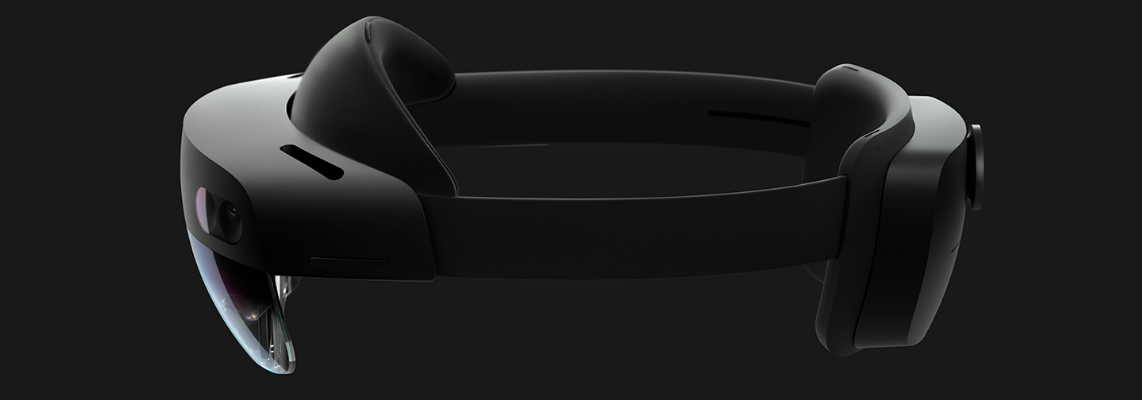
Microsoft HoloLens Headset. Source: Microsoft
PlayStation® VR Headset
PlayStation® VR Headset is a virtual reality headset developed by Sony Interactive Entertainment. It gives the user an amazing gaming experience with stunning High Dynamic Range visuals and up to 120FPS, as two 1920 x 1080 OLED displays deliver a vast 100º field of view. PSVR is fully functional with the PlayStation 4™ and is forward compatible with the PlayStation 5™ home video game console.

PlayStation VR Headset. Source: PlayStation
PlayStation® VR 2 Headset
PlayStation®VR 2 is the next generation of virtual reality gaming by PlayStation. It gives the user an amazing gaming experience with new stunning 4K High Dynamic Range visuals and up to 120fps, as two 2000 x 2040 OLED displays deliver over four times the resolution generated by the original PlayStation®VR headset. A vast 110º field of view and a light, well-balanced Fresnel lens. The lens adjustment dial allows you to customize spacing between lenses to match your eye position for an optimal onscreen image. Along with ground-breaking new controllers and genre-defining games, all made possible by the power of PS5™.
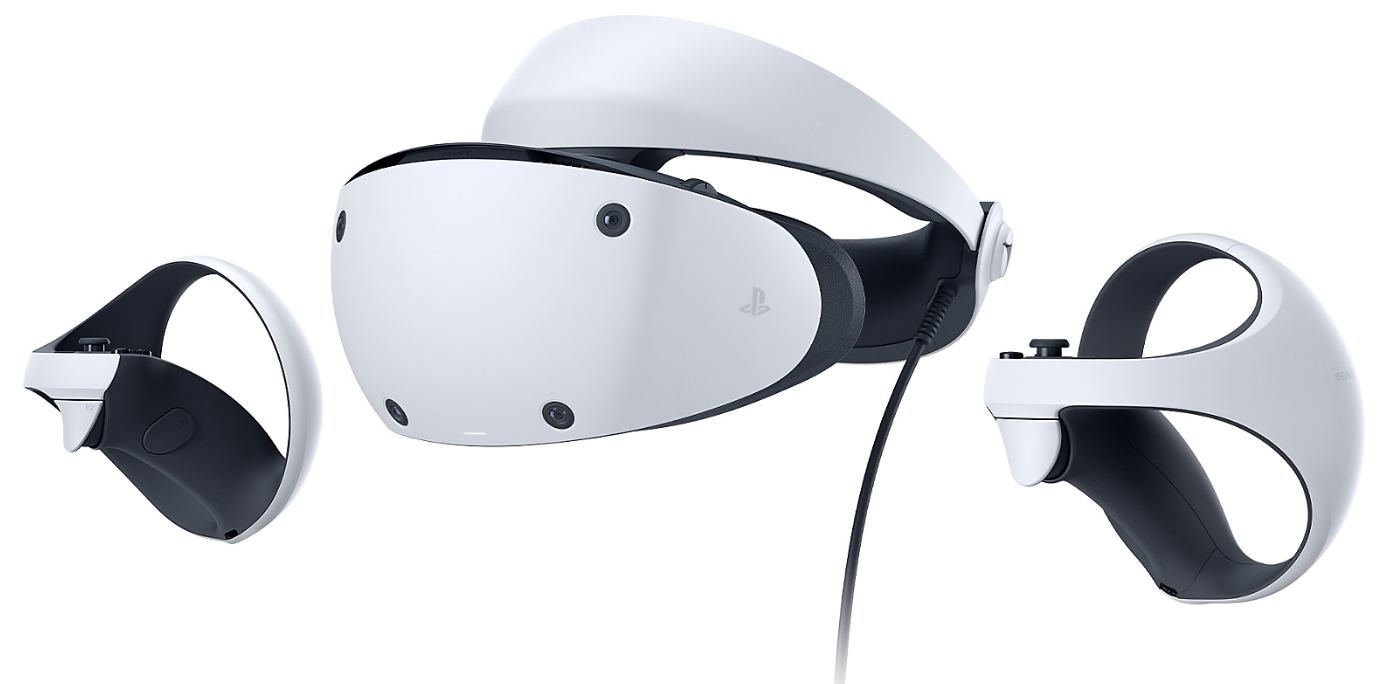
PlayStation VR 2 Headset. Source: PlayStation
Oculus Quest Headsets
Oculus Developer Tools
Oculus Developer Hub (ODH) for Windows is a desktop companion tool that streamlines app development for the Oculus Quest.

Oculus Developer Hub (ODH)
Oculus Developer Hub (ODH) for macOS is a desktop companion tool that streamlines app development for the Oculus Quest.
Oculus Integration SDK is a toolkit that provides tools for Unity packages OVRPlugin, Interaction SDK (Experimental), Platform SDK, Voice SDK, Audio SDK, and Lipsync SDK.
OVR Metrics Tool is a tool that provides performance metrics for Quest and Quest 2, including frame rate, heat, GPU & CPU throttling values, tears and stale frames per second.
GPU Systrace is a utility that contains required files to modify the Android SDK tool Systrace in order to provide low-level GPU pipeline data for apps running on Quest and Quest 2.
Meta Presence Platform is a suite of tools that let's you build the future of spatial computing with state-of-the-art AI, machine perception, graphics, and audio technologies, so you can invent experiences that blend the physical and virtual worlds.
Arkio is a collaborative design tool that enables you to sketch buildings, interiors or urban plans with others using VR, desktops, tablets and phones.
Gravity Sketch is a 3D design and collaboration tool that enables you to create vehicles, sneakers, furniture, characters, art, and more. Express your ideas with 3D strokes and geometry; solve complex design challenges working directly in 3D at any scale, all with a fun and intuitive toolset that makes working in 3D easy.
Immersed is a free app for multiple virtual screens in VR for Mac/PC/Linux (with no extra hardware) in stunning virtual worlds. It's great for solo work with multiple screens in a virtual coffee shop, or for collaborating with your team around even more screens and whiteboards.
Meta Quest 3
Checkout the Meta Quest 3 (Available October 10th)
Meta Quest 3 Mixed Reality headset
Hardware Specs:
- CPU: Snapdragon XR2 "Gen 2" chipset (double the GPU processing power of the Meta Quest 2).
- RAM: 8GB.
- Display Resolution: 2064x2208 pixels per eye nearly 30% better than the Meta Quest 2.
- Field of View (FOV): 110 degrees horizontal and 96 degrees vertical.
- Refresh Rate: 90Hz, 120Hz (experimental).
- Wi-Fi: Wi-Fi 6E enabled (region permitting).
Price:
- $499 for a 128GB model.
- $649 for a 512GB model.
Battery Life:
- Up to 2.2 hours of usage on average.
- Gaming: 2.4 hours of usage on average.
- Social: 2.2 hours of usage on average.
- Productivity: 1.5 hours of usage on average.
- Media: 2.9 hours of usage on average.
- Charging Time: Approximately 2.3 hours with the included 18W power adapter (headset only).
Privacy Options
- External LED: Signal notifies bystanders that the external cameras are in use.
- Data Protection: Advanced encryption plus customized settings include data sharing opt-in/opt-out, electronic mic/camera disconnect and password/PIN protection to let multiple users explore safely.
Quest 2
Oculus Quest 2 is a virtual reality headset developed by Facebook AKA Meta Technologies, LLC. The Quest 2 provides multiplayer games to unique social experiences to joining up with friends at a live show or instructor-led workout. With High Dynamic Range visuals and up to 120fps, as two 1832x1920 per-eye and vast 97° field of view horizontal. Oculus Quest 2 can be connected to a PC via Oculus Link, which can be performed using the official Link cable or a third party USB-C cable. This allows the headset to be used to run content from SteamVR and the desktop Oculus store. Note that a high-bandwidth USB specification (USB 3.0 at a minimum) is required to achieve a high-quality and smooth picture.
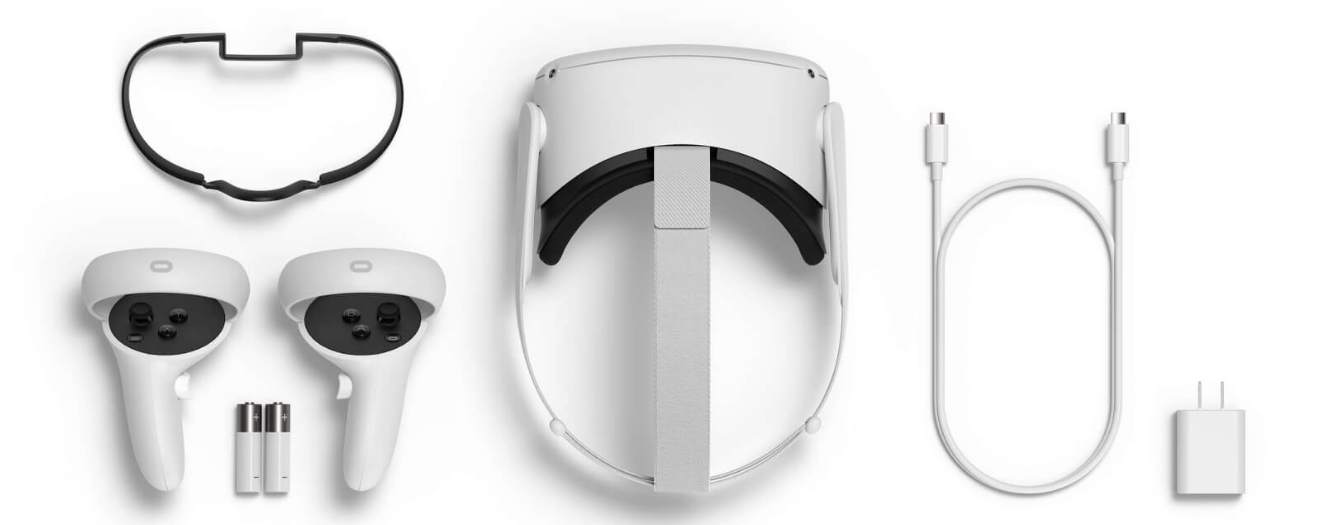
Oculus Quest 2 Headset. Source: Oculus
Quest Pro
Meta Quest Pro($1500 USD, out October 25) is the first-ever device powered by the new Qualcomm Snapdragon XR2+ platform, which is optimized for VR to run at 50% more power than Meta Quest 2 with better thermal dissipation. Each Meta Quest Pro comes with the following specs:
- Snapdragon XR2+ processor
- 12GB of memory(RAM)
- Up to 256GB of storage.
- 90 Hz refresh rate.
- 50% more performance than Quest 2.
- 1.3x larger color gamut than Quest 2.
- 1800 by 1920 pixels per display, which is 37% more pixels per inch and 10% greater pixels per degree than Meta Quest 2.
- 10 high-res sensors (five inside the headset and five outside).
- New sensor architecture with high-res outward-facing cameras that capture 4x the pixels as Meta Quest 2 cameras.
- Charging dock and 45W USB-C power adapter.

Oculus Quest Pro Headset. Credit: Meta
Quest Pro Accessories:
- Meta Quest Pro Compact Charging Dock ($79.99 USD, out October 25)
- Meta Quest Pro VR Earphones ($49.99 USD, out October 25)
- Meta Quest Pro Carry Case from Incase ($119.95 USD, out October 25)
- Meta Quest Pro Full Light Blocker ($49.99 USD, out November 22)

Oculus Quest Pro Headset & Accessories. Credit: Meta

Oculus Quest Pro Controllers. Credit: Meta
Apple Vision Pro Headset
Vision Pro Headset
Vision Pro Headset with battery pack
R1 & M2 chips in the Vision Pro Headset
VisionOS
Patents:
- Mixed Reality Headset GUI's, how to control menus with Eye Tracking & in-air Micro Gesturing
- Apple VR Headset Input System that Detects Various Hand Gestures using Multiple Apple Rings (Patent US 20220365598 A1)
- Apple 3D Mapping Technology with 'Multi-Sensor' Longer-Range Depth Mapping ((Patent US 20220364849 A1)
- Apple XR Headset Self-Correcting Face Camera System
- Euro Patent Filing for Apple 'Continuity' Feature being extended to their Future XR Headset
- Apple XR Headset Finger Devices that include sensors with submicron resolution that detect the tiniest of movements (Patent US 20230073039 A1)
- Apple Finger-Mounted Device and Ring Accessories to Assist future MR Headset users maneuver and work in 3D spaces. (Patent US 20220382376 A1.)
- Apple Ring that uses a Self-Mixing Interferometry Sensor-based Gesture System (Patent US 20220382384 A1.)
- Apple Voltage Standing Wave Radio (VSWR) Sensors in their Future MR Headset, Smartglasses, iPhones+ (Patent US 20220381895 A1.)
- Apple MR Headset Cooling System (Patent US 20220394889 A1)
- Apple Clip-On Prescription Lenses System for a Future HMD (Eyeglasses and/or MR Headset) (Patent US 20220391608 A1)
Apple Vision Pro Headset Specs:
- Powered by an M2 chip and R1 chip(dedicated toward real-time sensor processing for the 12 cameras and 5 sensors on the Vision Pro headset).
- High-resolution 4K micro OLED displays.
- Display refresh rate of 90Hz and supports a special 96Hz mode for 24fps video.
- Display Pixel Size will be between 3000 ppi-4000 ppi.
- Display offers a brightness of 5,000 nits.
- The color gamut is quoted as DCI > 97% DCI.
- 96W USB-C power adapter.
- A USB-C port for data transfer.
- A proprietary magnetic port(MagSafe) to attach the battery pack.
- Expected battery life of about 2 hours per pack.
- 12 optical cameras and 5 sensors for tracking movements, mapping the environment, and projecting visual experiences.
- WiFi 6E, which adds 6GHz spectrum to the 2.4GHz & 5GHz bands for increased bandwidth and less device interference.
OLEDoS (OLED on Silicon) is a display panel that typically has a diagonal length of less than 1 inch and meets the 3000 ppi-4000 ppi resolution criteria of AR/VR device displays. Existing OLED displays use Low-Temperature-Poly-Silicon (LTPS) or Oxide TFT based on glass substrates. OLEDoS uses silicon-wafer-based CMOS substrates. Using silicon substrates, ultra-fine circuit structures typically used in semiconductor processes can be reproduced, which in turn lead to the creation of ultra-high-resolution OLEDs when organic matter is deposited on them.
LG OLEDoS Display Specs:
- High-resolution 4K micro OLED displays.
- Display Pixel Size will be between 3000 ppi-4000 ppi.
- Display offers a brightness of 5,000 nits.
- The color gamut is quoted as DCI > 97% DCI.

OLEDoS: Solution for ultra-high resolution
Credit: LG
OLEDoS is also called Micro OLED in the market and features high efficiency, high luminance, infinite contrast, fast response and long LED life compared to OLED. The size is smaller than 1 inch, the user does not see the panel directly but sees the enlarged image through the optical lens. When used on AR/VR equipment, it shows high resolution in a small, lightweight wearable device.

Specs for OLED and OLEDoS
Credit: Sony
VisionOS
- VisionOS is Apple's iOS-like operating system for their upcoming AR/VR (Augmented Reality/Virtual Reality) headset powered by Apple's Silicon M2 and R1 chips. It will have an App Store with apps that include mixed-reality versions of their core Apple apps like Messages, FaceTime, Maps, and AR/VR games from Apple Arcade. Along with features such as Memojis and SharePlay that could be central to the user experience.
VisionOS. Image Credit: Apple
visionOS Resources
- visionOS SDK
- Learn about visionOS
- Apple Vision Pro developer kit
- Apple Vision Pro developer Labs
- Get started with building apps for spatial computing
- Apple Vision Pro compatibility evaluations
- Checking whether your existing app is compatible with visionOS
- Making your existing app compatible with visionOS
- Bringing your existing apps to visionOS
- Interacting with your app in the visionOS simulator
- Diagnosing and resolving bugs in your running app
- Running your app in Simulator or on a device
- Diagnosing and resolving bugs in your running app
- Improving your app’s performance
- Analyzing the performance of your Metal app
- Establishing UIRequiredDeviceCapabilities
- Game controllers (GCSupportsControllerUserInteraction)
- Vision Pro Human Interface Guidelines
Apple AR Toolkits and Frameworks
- Reality Composer Pro is a tool that let's you discover how to easily compose, edit, and preview 3D content with Reality Composer Pro. Follow along as we explore this developer tool by setting up a new project, composing scenes, adding particle emitters and audio, and even previewing content on device.
- Reality Composer is a powerful tool that makes it easy for you to create interactive augmented reality experiences with no prior 3D experience. The Reality Converter quickly converts your existing 3D models to USDZ so it works seamlessly in our tools and on all AR-enabled iPhone and iPad devices.
- Apple Vision is a framework that performs face and face landmark detection, text detection, barcode recognition, image registration, and general feature tracking. Vision also allows the use of custom Core ML models for tasks like classification or object detection.
- USDZ is a file format that contains a 3D scene or object saved in the USDZ Universal format, which is developed by Apple and Pixar Animation Studios. It is an uncompressed and unencrypted .ZIP archive that stores a Universal Scene Description (.USD, USDA, or USDC) file, which includes 3D geometry and shading data. USDZ files may also contain .PNG and .JPEG image textures and .M4A, .MP3, or .WAV audio files utilized in the 3D object or scene.
- ARKit is a set set of software development tools to enable developers to build augmented-reality apps for iOS developed by Apple. The latest version ARKit 3.5 takes advantage of the new LiDAR Scanner and depth sensing system on iPad Pro(2020) to support a new generation of AR apps that use Scene Geometry for enhanced scene understanding and object occlusion.
- RealityKit is a framework to implement high-performance 3D simulation and rendering with information provided by the ARKit framework to seamlessly integrate virtual objects into the real world.
- RealityUI is a Swift Package for creating familiar UI Elements and animations in a RealityKit rendered Augmented Reality or Virtual Reality scene.
- SceneKit is a high-level 3D graphics framework that helps you create 3D animated scenes and effects in your iOS apps.
- UIKit is a framework provides the required infrastructure for your iOS or tvOS apps. It provides the window and view architecture for implementing your interface, the event handling infrastructure for delivering Multi-Touch and other types of input to your app, and the main run loop needed to manage interactions among the user, the system, and your app.
- SwiftUI is a user interface toolkit that provides views, controls, and layout structures for declaring your app's user interface. The SwiftUI framework provides event handlers for delivering taps, gestures, and other types of input to your application.
- MetalFX is a new API that provides platform optimized graphics effects for Metal applications. With MetalFX Upscaling, your application can now render frames at a lower resolution, reducing rendering time, without compromising rendering quality. We'll also show you how and when to use its two effects: spatial upscaling, which delivers substantial performance gains, and temporal AA and upscaling, which delivers the highest quality rendering.

MetalFX Rendering. Image Credit: Apple
- Apple Core Animation Framework is a graphics rendering and animation infrastructure that provides high frame rates and smooth animations without burdening the CPU and slowing down your app.
- Apple Core Graphics Framework is a framework based on the Quartz advanced drawing engine. It provides low-level, lightweight 2D rendering with unmatched output fidelity.
- GPUImage3 is the third generation of the GPUImage framework, an open source project for performing GPU-accelerated image and video processing on Mac and iOS. The original GPUImage framework was written in Objective-C and targeted Mac and iOS, the second iteration rewritten in Swift using OpenGL to target Mac, iOS, and Linux, and now this third generation is redesigned to use Apple's Metal in place of OpenGL.
- Unity AR Foundation is a framework purpose-built for augmented reality development that allows you to build rich experiences once, then deploy across multiple mobile and wearable AR devices.
- Universal Render Pipeline (URP) is a prebuilt Scriptable Render Pipeline, made by Unity. It provides artist-friendly workflows that let you quickly and easily create optimized graphics across a range of platforms, from mobile to high-end consoles and PCs.
HTC Vive Headset
HTC Vive Headset is a virtual reality headset developed by HTC.

SteamVR
SteamVR is the ultimate tool for experiencing VR content on the hardware of your choice. SteamVR supports the Valve Index, HTC Vive, Oculus Rift, Windows Mixed Reality headsets, and others.

SteamVR Home
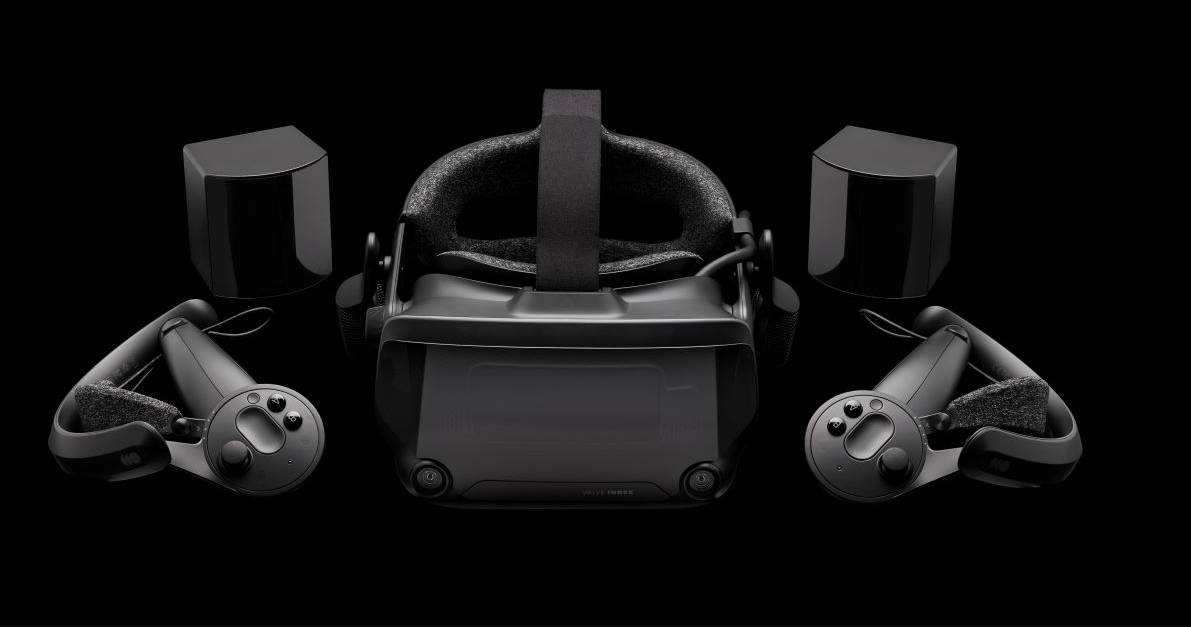
Valve Index VR Headset. Source: Steam
Nreal Air AR Glasses
Nreal Air AR Glasses & Nreal Adapter is a pair AR Glasses that you Watch, Stream, and Game on PC, Android, iOS, Nintendo Switch, Steam Deck, Playstation 4|5, Xbox Series X|S, and Cloud Gaming.


Samsung Gear VR Headset
Samsung Gear VR Headset is a virtual reality headset developed by Samsung along with collaboration from Oculus VR.
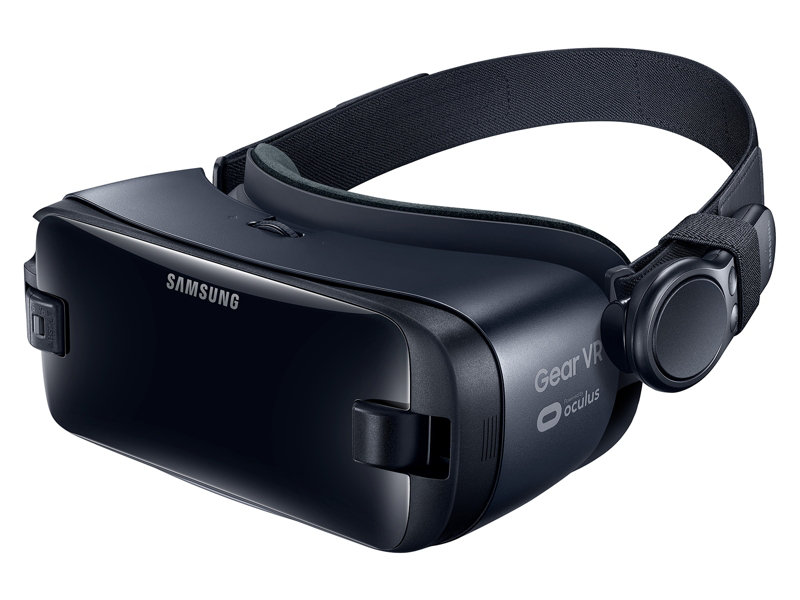
Perception Neuron Motion Capture Suit
Perception Neuron Motion Capture Suit is a series of industry-leading motion capture solutions designed for every type of creator, from the amateur 3D animator to the VFX pro.


Vulkan Development

Vulkan Learning Resources
Vulkan® is a modern cross-platform graphics and compute API that provides high-efficiency, cross-platform access to modern GPUs used in a wide variety of devices from PCs and consoles to mobile phones and embedded platforms. Vulkan is currently in development by the Khronos consortium.
HLSL to SPIR-V Feature Mapping Manual
Vulkan GLSL Ray Tracing Emulator Tutorial
Vulkan Tools, Libraries, and Frameworks
Vulkan SDK is a set of tools that enables Vulkan developers to develop Vulkan applications.
SPIR-V is a set of tools that enables high-level language front-ends to emit programs in a standardized intermediate form to be ingested by Vulkan, OpenGL or OpenCL drivers. It eliminates the need for high-level language front-end compilers in device drivers, significantly reducing driver complexity, enables a broad range of language and framework front-ends to run on diverse hardware architectures and encourages a vibrant ecosystem of open source analysis, porting, debug and optimization tools.
SPIRV-Reflect is a lightweight library that provides a C/C++ reflection API for SPIR-V shader bytecode in Vulkan applications.
Vulkan® Tools is a project that provides Khronos official Vulkan Tools and Utilities for Windows, Linux, Android, and macOS.
Vulkan-Hpp is a API that provides a header only C++ bindings for the Vulkan C API to improve the developers Vulkan experience without introducing CPU runtime cost. It adds features like type safety for enums and bitfields, STL container support, exceptions and simple enumerations.
Vulkan® Memory Allocator (VMA) is a library that provides a simple and easy to integrate API to help you allocate memory for Vulkan® buffer and image storage.
AMD Open Source Driver for Vulkan® is an open-source Vulkan driver for AMD Radeon™ graphics adapters on Linux®.
NVIDIA® Nsight™ Visual Studio Edition is an application development environment for heterogeneous platforms which brings GPU computing into Microsoft Visual Studio. NVIDIA Nsight™ VSE allows you to build and debug integrated GPU kernels and native CPU code as well as inspect the state of the GPU and memory.
Radeon™ GPU Profiler is a performance tool that can be used by developers to optimize DirectX®12, Vulkan® and OpenCL™ applications for AMD RDNA™ and GCN hardware.
Radeon™ GPU Analyzer is a compiler and code analysis tool for Vulkan®, DirectX®, OpenGL® and OpenCL™.
Radeon™ Memory Visualizer (RMV) is a tool provided by AMD for use by game engine developers. It allows engineers to examine, diagnose, and understand the GPU memory management within their projects.
DXVK is a Vulkan-based translation layer for Direct3D 9/10/11 which allows running 3D applications on Linux using Wine.
MoltenVK is an implementation of Vulkan running on iOS and macOS using Apple's Metal graphics framework.
RenderDoc is a stand-alone graphics debugger that allows quick and easy single-frame capture and detailed introspection of any application using Vulkan, D3D11, OpenGL & OpenGL ES or D3D12 across Windows, Linux, Android, Stadia, or Nintendo Switch™.
PerfDoc is a cross-platform Vulkan layer which checks Vulkan applications for best practices on Arm Mali devices.
GLFW is an Open Source, multi-platform library for OpenGL, OpenGL ES and Vulkan application development. It provides a simple, platform-independent API for creating windows, contexts and surfaces, reading input, handling events, etc. GLFW natively supports Windows, macOS and Linux and other Unix-like systems. On Linux both X11 and Wayland are supported.
VulkanSharp is a project provides a .NET binding for the Vulkan API.
Vortice.Vulkan is a .NET Standard 2.0 and .NET5 low-level bindings for Vulkan API.
VKD3D-Proton is a fork of VKD3D, which aims to implement the full Direct3D 12 API on top of Vulkan.
ImGui is a bloat-free graphical user interface library for C++. It outputs optimized vertex buffers that you can render anytime in your 3D-pipeline enabled application. It is fast, portable, renderer agnostic and self-contained (no external dependencies).
Ash is a very lightweight wrapper around Vulkan.
gfx-rs is a low-level, cross-platform graphics and compute abstraction library in Rust.
Vulkan.jl is a lightweight wrapper around the Vulkan graphics and compute library. It exposes abstractions over the underlying C interface, primarily geared towards developers looking for a more natural way to work with Vulkan with minimal overhead.
Metal Development
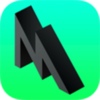
Metal Learning Resources
Metal is a low-level API that provides a platform-optimized, low-overhead API for developing the latest 3D pro applications and amazing games using a rich shading language with tighter integration between graphics and compute programs. To help you do more while managing ever more complex shader code, Metal adds an unparalleled suite of advanced GPU debugging tools to help you realize the full potential of your graphics code.
Metal Shading Language Specification
Using Metal Feature Set Tables
Optimizing Performance with the GPU Counters Instrument
Reducing the Memory Footprint of Metal Apps
Metal Developer Tools for Windows
Metal Tools, Libraries, and Frameworks
Apple Foundation Framework is a framework provides a base layer of functionality for apps and frameworks, including data storage and persistence, text processing, date and time calculations, sorting and filtering, and networking. The classes, protocols, and data types defined by Foundation are used throughout the macOS, iOS, watchOS, and tvOS SDKs.
Apple Core Animation Framework is a graphics rendering and animation infrastructure that provides high frame rates and smooth animations without burdening the CPU and slowing down your app.
Apple Core Graphics Frameworkis a framework based on the Quartz advanced drawing engine. It provides low-level, lightweight 2D rendering with unmatched output fidelity.
Paravirtualized Graphics Framework is a framework that implements hardware-accelerated graphics for macOS running in a virtual machine, hereafter known as the guest. The macOS operating system provides a graphics driver that runs inside the guest, communicating with the framework in the host operating system to take advantage of Metal-accelerated graphics.
Xcode includes everything developers need to create great applications for Mac, iPhone, iPad, Apple TV, and Apple Watch. Xcode provides developers a unified workflow for user interface design, coding, testing, and debugging. Xcode 12 is built as an Universal app that runs 100% natively on Intel-based CPUs and Apple Silicon. It includes a unified macOS SDK that features all the frameworks, compilers, debuggers, and other tools you need to build apps that run natively on Apple Silicon and the Intel x86_64 CPU.
SwiftUI is a user interface toolkit that provides views, controls, and layout structures for declaring your app's user interface. The SwiftUI framework provides event handlers for delivering taps, gestures, and other types of input to your application.
UIKit is a framework provides the required infrastructure for your iOS or tvOS apps. It provides the window and view architecture for implementing your interface, the event handling infrastructure for delivering Multi-Touch and other types of input to your app, and the main run loop needed to manage interactions among the user, the system, and your app.
AppKit is a graphical user interface toolkit that contains all the objects you need to implement the user interface for a macOS app such as windows, panels, buttons, menus, scrollers, and text fields, and it handles all the details for you as it efficiently draws on the screen, communicates with hardware devices and screen buffers, clears areas of the screen before drawing, and clips views.
ARKit is a set set of software development tools to enable developers to build augmented-reality apps for iOS developed by Apple. The latest version ARKit 3.5 takes advantage of the new LiDAR Scanner and depth sensing system on iPad Pro(2020) to support a new generation of AR apps that use Scene Geometry for enhanced scene understanding and object occlusion.
RealityKit is a framework to implement high-performance 3D simulation and rendering with information provided by the ARKit framework to seamlessly integrate virtual objects into the real world.
SceneKit is a high-level 3D graphics framework that helps you create 3D animated scenes and effects in your iOS apps.
Instruments is a powerful and flexible performance-analysis and testing tool that’s part of the Xcode tool set. It’s designed to help you profile your iOS, watchOS, tvOS, and macOS apps, processes, and devices in order to better understand and optimize their behavior and performance.
Cocoapods is a dependency manager for Swift and Objective-C used in Xcode projects by specifying the dependencies for your project in a simple text file. CocoaPods then recursively resolves dependencies between libraries, fetches source code for all dependencies, and creates and maintains an Xcode workspace to build your project.
AppCode is constantly monitoring the quality of your code. It warns you of errors and smells and suggests quick-fixes to resolve them automatically. AppCode provides lots of code inspections for Objective-C, Swift, C/C++, and a number of code inspections for other supported languages.
MoltenVK is an implementation of Vulkan running on iOS and macOS using Apple's Metal graphics framework.
DirectX Development

DirectX Learning Resources
Microsoft DirectX® is a low-level API that handles tasks related to multimedia for game programming and video on Microsoft platforms(Windows & Xbox).
Getting Started with DirectX 12 Ultimate
Getting Started with the DirectX 12 Agility SDK
DirectX 12 and Graphics Education | YouTube
DirectX 12 Technology | NVIDIA
AMD DirectX® 12 (DX12) Technology | AMD
Top Microsoft DirectX Courses Online | Udemy
DirectX - Learn Microsoft DirectX from Scratch Course | Udemy
DirectX 11 Programming Course | Udemy
DirectX Tools, Libraries, and Frameworks
Visual Studio is an integrated development environment (IDE) from Microsoft; which is a feature-rich application that can be used for many aspects of software development. Visual Studio makes it easy to edit, debug, build, and publish your app. By using Microsoft software development platforms such as Windows API, Windows Forms, Windows Presentation Foundation, and Windows Store.
Visual Studio Code is a code editor redefined and optimized for building and debugging modern web and cloud applications.
DirectX-Graphics-Samples is a project that contains the DirectX 12 Graphics samples that demonstrate how to build graphics intensive applications for Windows 10.
PIX on Windows is a performance tuning and debugging tool for DirectX 12 games on Windows.
DirectStorage API is an API in the DirectX family originally designed for the Velocity Architecture to Windows. The DirectX API is architected in a way that takes all this into account and maximizes performance throughout the entire pipeline from NVMe drive all the way to the GPU. It does this in several ways: by reducing per-request NVMe overhead, enabling batched many-at-a-time parallel IO requests which can be efficiently fed to the GPU, and giving games finer grain control over when they get notified of IO request completion instead of having to react to every tiny IO completion. The DirectStorage API will be available on Windows 11 PCs with NVMe SSDs, but will also be support in Windows 10 version 1909 and newer.
NVIDIA® Nsight™ Visual Studio Edition is an application development environment for heterogeneous platforms which brings GPU computing into Microsoft Visual Studio. NVIDIA Nsight™ VSE allows you to build and debug integrated GPU kernels and native CPU code as well as inspect the state of the GPU and memory.
NVRHI (NVIDIA Rendering Hardware Interface) is a library that implements a common abstraction layer over multiple graphics APIs (GAPIs): Direct3D 11, Direct3D 12, and Vulkan 1.2. It works on Windows (x64 only) and Linux (x64 and ARM64).
RTXMU - RTX Memory Utility SDK is an SDK tool that batchs up all of the acceleration structure build inputs and pass them to RTXMU which in turn will perform all the suballocation memory requests and build details including compaction. Then post build info is abstracted away by the SDK in order to do compaction under the hood. RTXMU returns acceleration structure handle ids that are used to reference the underlying memory buffers. These handle ids are passed into RTXMU to create compaction copy workloads, deallocate unused build resources or remove all memory associated with an acceleration structure.
Radeon™ GPU Profiler is a performance tool that can be used by developers to optimize DirectX®12, Vulkan® and OpenCL™ applications for AMD RDNA™ and GCN hardware.
Radeon™ GPU Analyzer is a compiler and code analysis tool for Vulkan®, DirectX®, OpenGL® and OpenCL™.
Radeon™ Memory Visualizer (RMV) is a tool provided by AMD for use by game engine developers. It allows engineers to examine, diagnose, and understand the GPU memory management within their projects.
FNA is an XNA4 reimplementation that focuses solely on developing a fully accurate XNA4 runtime for the desktop.
FAudio is an XAudio reimplementation that focuses solely on developing fully accurate DirectX Audio runtime libraries for the FNA project, including XAudio2, X3DAudio, XAPO, and XACT3.
Simple DirectMedia Layer is a cross-platform development library designed to provide low level access to audio, keyboard, mouse, joystick, and graphics hardware via OpenGL and Direct3D. It is used by video playback software, emulators, and popular games including Valve's award winning catalog.
DXVK is a Vulkan-based translation layer for Direct3D 9/10/11 which allows running 3D applications on Linux using Wine.
VKD3D-Proton is a fork of VKD3D, which aims to implement the full Direct3D 12 API on top of Vulkan.
RenderDoc is a stand-alone graphics debugger that allows quick and easy single-frame capture and detailed introspection of any application using Vulkan, D3D11, OpenGL & OpenGL ES or D3D12 across Windows, Linux, Android, Stadia, or Nintendo Switch™.
Computer Vision Development
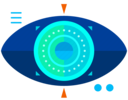
Computer Vision Learning Resources
Computer Vision is a field of Artificial Intelligence (AI) that focuses on enabling computers to identify and understand objects and people in images and videos.
Exploring Computer Vision in Microsoft Azure
Top Computer Vision Courses Online | Coursera
Top Computer Vision Courses Online | Udemy
Learn Computer Vision with Online Courses and Lessons | edX
Computer Vision and Image Processing Fundamentals | edX
Introduction to Computer Vision Courses | Udacity
Computer Vision Nanodegree program | Udacity
Machine Vision Course |MIT Open Courseware
Computer Vision Training Courses | NobleProg
Visual Computing Graduate Program | Stanford Online
Computer Vision Tools, Libraries, and Frameworks
OpenCV is a highly optimized library with focus on real-time computer vision applications. The C++, Python, and Java interfaces support Linux, MacOS, Windows, iOS, and Android.
Microsoft Cognitive Toolkit (CNTK) is an open-source toolkit for commercial-grade distributed deep learning. It describes neural networks as a series of computational steps via a directed graph. CNTK allows the user to easily realize and combine popular model types such as feed-forward DNNs, convolutional neural networks (CNNs) and recurrent neural networks (RNNs/LSTMs). CNTK implements stochastic gradient descent (SGD, error backpropagation) learning with automatic differentiation and parallelization across multiple GPUs and servers.
Scikit-Learn is a Python module for machine learning built on top of SciPy, NumPy, and matplotlib, making it easier to apply robust and simple implementations of many popular machine learning algorithms.
NVIDIA cuDNN is a GPU-accelerated library of primitives for deep neural networks. cuDNN provides highly tuned implementations for standard routines such as forward and backward convolution, pooling, normalization, and activation layers. cuDNN accelerates widely used deep learning frameworks, including Caffe2, Chainer, Keras, MATLAB, MxNet, PyTorch, and TensorFlow.
Automated Driving Toolbox™ is a MATLAB tool that provides algorithms and tools for designing, simulating, and testing ADAS and autonomous driving systems. You can design and test vision and lidar perception systems, as well as sensor fusion, path planning, and vehicle controllers. Visualization tools include a bird’s-eye-view plot and scope for sensor coverage, detections and tracks, and displays for video, lidar, and maps. The toolbox lets you import and work with HERE HD Live Map data and OpenDRIVE® road networks. It also provides reference application examples for common ADAS and automated driving features, including FCW, AEB, ACC, LKA, and parking valet. The toolbox supports C/C++ code generation for rapid prototyping and HIL testing, with support for sensor fusion, tracking, path planning, and vehicle controller algorithms.
LRSLibrary is a Low-Rank and Sparse Tools for Background Modeling and Subtraction in Videos. The library was designed for moving object detection in videos, but it can be also used for other computer vision and machine learning problems.
Image Processing Toolbox™ is a tool that provides a comprehensive set of reference-standard algorithms and workflow apps for image processing, analysis, visualization, and algorithm development. You can perform image segmentation, image enhancement, noise reduction, geometric transformations, image registration, and 3D image processing.
Computer Vision Toolbox™ is a tool that provides algorithms, functions, and apps for designing and testing computer vision, 3D vision, and video processing systems. You can perform object detection and tracking, as well as feature detection, extraction, and matching. You can automate calibration workflows for single, stereo, and fisheye cameras. For 3D vision, the toolbox supports visual and point cloud SLAM, stereo vision, structure from motion, and point cloud processing.
Statistics and Machine Learning Toolbox™ is a tool that provides functions and apps to describe, analyze, and model data. You can use descriptive statistics, visualizations, and clustering for exploratory data analysis; fit probability distributions to data; generate random numbers for Monte Carlo simulations, and perform hypothesis tests. Regression and classification algorithms let you draw inferences from data and build predictive models either interactively, using the Classification and Regression Learner apps, or programmatically, using AutoML.
Lidar Toolbox™ is a tool that provides algorithms, functions, and apps for designing, analyzing, and testing lidar processing systems. You can perform object detection and tracking, semantic segmentation, shape fitting, lidar registration, and obstacle detection. Lidar Toolbox supports lidar-camera cross calibration for workflows that combine computer vision and lidar processing.
Mapping Toolbox™ is a tool that provides algorithms and functions for transforming geographic data and creating map displays. You can visualize your data in a geographic context, build map displays from more than 60 map projections, and transform data from a variety of sources into a consistent geographic coordinate system.
UAV Toolbox is an application that provides tools and reference applications for designing, simulating, testing, and deploying unmanned aerial vehicle (UAV) and drone applications. You can design autonomous flight algorithms, UAV missions, and flight controllers. The Flight Log Analyzer app lets you interactively analyze 3D flight paths, telemetry information, and sensor readings from common flight log formats.
Parallel Computing Toolbox™ is a tool that lets you solve computationally and data-intensive problems using multicore processors, GPUs, and computer clusters. High-level constructs such as parallel for-loops, special array types, and parallelized numerical algorithms enable you to parallelize MATLAB® applications without CUDA or MPI programming. The toolbox lets you use parallel-enabled functions in MATLAB and other toolboxes. You can use the toolbox with Simulink® to run multiple simulations of a model in parallel. Programs and models can run in both interactive and batch modes.
Partial Differential Equation Toolbox™ is a tool that provides functions for solving structural mechanics, heat transfer, and general partial differential equations (PDEs) using finite element analysis.
ROS Toolbox is a tool that provides an interface connecting MATLAB® and Simulink® with the Robot Operating System (ROS and ROS 2), enabling you to create a network of ROS nodes. The toolbox includes MATLAB functions and Simulink blocks to import, analyze, and play back ROS data recorded in rosbag files. You can also connect to a live ROS network to access ROS messages.
Robotics Toolbox™ provides a toolbox that brings robotics specific functionality(designing, simulating, and testing manipulators, mobile robots, and humanoid robots) to MATLAB, exploiting the native capabilities of MATLAB (linear algebra, portability, graphics). The toolbox also supports mobile robots with functions for robot motion models (bicycle), path planning algorithms (bug, distance transform, D*, PRM), kinodynamic planning (lattice, RRT), localization (EKF, particle filter), map building (EKF) and simultaneous localization and mapping (EKF), and a Simulink model a of non-holonomic vehicle. The Toolbox also including a detailed Simulink model for a quadrotor flying robot.
Deep Learning Toolbox™ is a tool that provides a framework for designing and implementing deep neural networks with algorithms, pretrained models, and apps. You can use convolutional neural networks (ConvNets, CNNs) and long short-term memory (LSTM) networks to perform classification and regression on image, time-series, and text data. You can build network architectures such as generative adversarial networks (GANs) and Siamese networks using automatic differentiation, custom training loops, and shared weights. With the Deep Network Designer app, you can design, analyze, and train networks graphically. It can exchange models with TensorFlow™ and PyTorch through the ONNX format and import models from TensorFlow-Keras and Caffe. The toolbox supports transfer learning with DarkNet-53, ResNet-50, NASNet, SqueezeNet and many other pretrained models.
Reinforcement Learning Toolbox™ is a tool that provides an app, functions, and a Simulink® block for training policies using reinforcement learning algorithms, including DQN, PPO, SAC, and DDPG. You can use these policies to implement controllers and decision-making algorithms for complex applications such as resource allocation, robotics, and autonomous systems.
Deep Learning HDL Toolbox™ is a tool that provides functions and tools to prototype and implement deep learning networks on FPGAs and SoCs. It provides pre-built bitstreams for running a variety of deep learning networks on supported Xilinx® and Intel® FPGA and SoC devices. Profiling and estimation tools let you customize a deep learning network by exploring design, performance, and resource utilization tradeoffs.
Model Predictive Control Toolbox™ is a tool that provides functions, an app, and Simulink® blocks for designing and simulating controllers using linear and nonlinear model predictive control (MPC). The toolbox lets you specify plant and disturbance models, horizons, constraints, and weights. By running closed-loop simulations, you can evaluate controller performance.
Vision HDL Toolbox™ is a tool that provides pixel-streaming algorithms for the design and implementation of vision systems on FPGAs and ASICs. It provides a design framework that supports a diverse set of interface types, frame sizes, and frame rates. The image processing, video, and computer vision algorithms in the toolbox use an architecture appropriate for HDL implementations.
Microsoft AirSim is a simulator for drones, cars and more, built on Unreal Engine (with an experimental Unity release). AirSim is open-source, cross platform, and supports software-in-the-loop simulation with popular flight controllers such as PX4 & ArduPilot and hardware-in-loop with PX4 for physically and visually realistic simulations. It is developed as an Unreal plugin that can simply be dropped into any Unreal environment. AirSim is being developed as a platform for AI research to experiment with deep learning, computer vision and reinforcement learning algorithms for autonomous vehicles.
Photogrammetry Development

Photogrammetry Learning Resources
Photogrammetry is the art and science of extracting 3D information from photographs. The process involves taking overlapping photographs of an object, structure, or space, and converting them into 2D or 3D digital models. Photogrammetry is often used by surveyors, architects, engineers, and contractors to create topographic maps, meshes, point clouds, or drawings based on the real-world.
Aerial photogrammetry is process of utilizing aircrafts to produce aerial photography that can be turned into a 3D model or mapped digitally. Now, it is possible to do the same work with a drone.
Terrestrial(Close-range) photogrammetry is when images are captured using a handheld camera or with a camera mounted to a tripod. The output of this method is not to create topographic maps, but rather to make 3D models of a smaller object.
Top Photogrammetry Courses Online | Udemy
Photogrammetry With Drones: In Mapping Technology | Udemy
Introduction to Photogrammetry Course | Coursera
Photogrammetry Online Classes and Training | Linkedin Learning
Pix4D training and certification for mapping professionals
Drone mapping and photogrammetry workshops with Pix4D
Digital Photogrammetric Systems Course | Purdue Online Learning
Photogrammetry Training | Deep3D Photogrammetry
Photogrammetry Tools, Libraries, and Frameworks
Autodesk® ReCap™ is a software tool that converts reality captured from laser scans or photos into a 3D model or 2D drawing that's ready to be used in your design built for UAV and drone processes.
Autodesk® ReCap™ Photo is a cloud-connected solution tailored for drone/UAV photo capturing workflows. Using ReCap Photo, you can create textured meshes, point clouds with geolocation, and high-resolution orthographic views with elevation maps.
Pix4D is a unique suite of photogrammetry software for drone mapping. Capture images with our app, process on desktop or cloud and create maps and 3D models.
PIX4Dmapper is the leading photogrammetry software for professional drone mapping.
RealityCapture is a state-of-the-art photogrammetry software solution that creates virtual reality scenes, textured 3D meshes, orthographic projections, geo-referenced maps and much more from images and/or laser scans completely automatically.
Adobe Scantastic is a tool that makes the creation of 3D assets accessible to everyone. It can be used with just a mobile device (combined with Adobe's server-based photogrammetry pipeline), users can easily scan objects in their physical environment and turn them into 3D models which can then be imported into tools like Adobe Dimension and Adobe Aero.
Adobe Aero is a tool that helps you build, view, and share immersive AR experiences. Simply build a scene by bringing in 2D images from Adobe Photoshop and Illustrator, or 3D models from Adobe Dimension, Substance, third-party apps like Cinema 4D, or asset libraries like Adobe Stock and TurboSquid. Aero optimizes a wide array of assets, including OBJ, GLB, and glTF files, for AR, so you can visualize them in real time.
Agisoft Metashape is a stand-alone software product that performs photogrammetric processing of digital images and generates 3D spatial data to be used in GIS applications, cultural heritage documentation, and visual effects production as well as for indirect measurements of objects of various scales.
MicroStation is a CAD software platform for 2D and 3D dimensional design and drafting, developed and sold by Bentley Systems. It generates 2D/3D vector graphics objects and elements and includes building information modeling (BIM) features.
Leica Photogrammetry Suite (LPS) is a powerful photogrammetry system that delivers full analytical triangulation, the generation of digital terrain models, orthophoto production, mosaicking, and 3D feature extraction in a user-friendly environment that guarantees results even for photogrammetry novices.
PhotoCatch is the first app for Apple's Object Capture API, enabling anyone to create stunning 3D models in minutes, not days, with no code or 3D experience required.
PhotoCatch Desktop is a Professional photogrammetry workstation for exporting beautiful 3D assets ready for Augmented Reality and Visual Effects. It provides performance optimizations for M1 Max and M1 Ultra on MacBook Pro and Mac Studio, so you can process up to 4 3D models at the same time.
PhotoCatch Cloud is a professional service that brings desktop class photogrammetry and 3D editing tools to mobile devices, so you can capture, edit, and share 3D content on-site. It Syncs photo capture with your equipment and use Depth Capture so your 3D models stay the same size as the real world objects.
Terramodel is a powerful software package for the surveyor, civil engineer or contractor who requires a CAD and design package with integrated support for raw survey data.
MicMac is a free and open-source photogrammetry software tools for 3D reconstruction.
[3DF Zephyr] (https://www.3dflow.net/3df-zephyr-photogrammetry-software/) is a photogrammetry software solution by 3Dflow. It allows you automatically reconstruct 3D models from photos and deal with any 3D reconstruction and scanning challenge. No matter what camera sensor, drone or laser scanner device you are going to use.
COLMAP is a general-purpose Structure-from-Motion (SfM) and Multi-View Stereo (MVS) pipeline with a graphical and command-line interface. It offers a wide range of features for reconstruction of ordered and unordered image collections.
Multi-View Environment (MVE) is an effort to ease the work with multi-view datasets and to support the development of algorithms based on multiple views. It features Structure from Motion, Multi-View Stereo and Surface Reconstruction. MVE is developed at the TU Darmstadt.
AliceVision is a Photogrammetric Computer Vision Framework which provides 3D Reconstruction and Camera Tracking algorithms. AliceVision comes up with strong software basis and state-of-the-art computer vision algorithms that can be tested, analyzed and reused.
Meshroom is a free, open-source 3D Reconstruction Software based on the AliceVision framework.
PhotoModeler is a software extracts Measurements and Models from photographs taken with an ordinary camera. A cost-effective way for accurate 2D or 3D measurement, photo-digitizing, surveying, 3D scanning, and reality capture.
ODM is an open source command line toolkit to generate maps, point clouds, 3D models and DEMs from drone, balloon or kite images.
WebODM is a user-friendly, commercial grade software for drone image processing. Generate georeferenced maps, point clouds, elevation models and textured 3D models from aerial images. It supports multiple engines for processing, currently ODM and MicMac.
NodeODM is a standard API specification for processing aerial images with engines such as ODM. The API is used by clients such as WebODM, CloudODM and PyODM.
[ClusterODM]https://www.opendronemap.org/clusterodm/) is a reverse proxy, load balancer and task tracker with optional cloud autoscaling capabilities for NodeODM API compatible nodes. In a nutshell, it's a program to link together multiple NodeODM API compatible nodes under a single network address.
FIELDimageR is an R package to analyze orthomosaic images from agricultural field trials.
Regard3D is a free and open source structure-from-motion program. It converts photos of an object, taken from different angles, into a 3D model of this object.
Autodesk Development
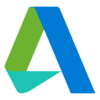
Autodesk Learning Resources
Autodesk is a global leader in design and make technology, with expertise across architecture, engineering, construction, design, manufacturing, and entertainment.
CNC programming (Computer Numerical Control Programming) is utilized by manufacturers to create program instructions for computers to control a machine tool. CNC is highly involved in the manufacturing process and improves automation as well as flexibility.
Software and Services for Education | Autodesk Education
Learning Civil 3D on Autodesk Knowledge Network
Top Autodesk Courses on Coursera
Top Autodesk Fusion 360 Courses on Coursera
Autodesk Tools and Frameworks
AutoCAD® is computer-aided design (CAD) software that architects, engineers, and construction professionals rely on to create precise 2D and 3D drawings. It also automates tasks such as comparing drawings, counting, adding blocks, creating schedules.
AutoCAD LT® is a powerful 2D computer-aided design (CAD) software that architects, engineers, construction professionals, and designers rely on to design, draft, and document with precise 2D geometry.
AutoCAD® Mobile App is a mobile(smartphone or tablet) version of AutoCAD that has the core design and drafting tools. Work on your CAD drawings anytime, anywhere—even offline.
AutoCAD® Web App is a web version of AutoCAD that can edit, create, share, and view CAD drawings in a web browser on any computer.

AutoCAD® with Architecture toolset. Source: Autodesk

AutoCAD® with Mechanical toolset. Source: Autodesk
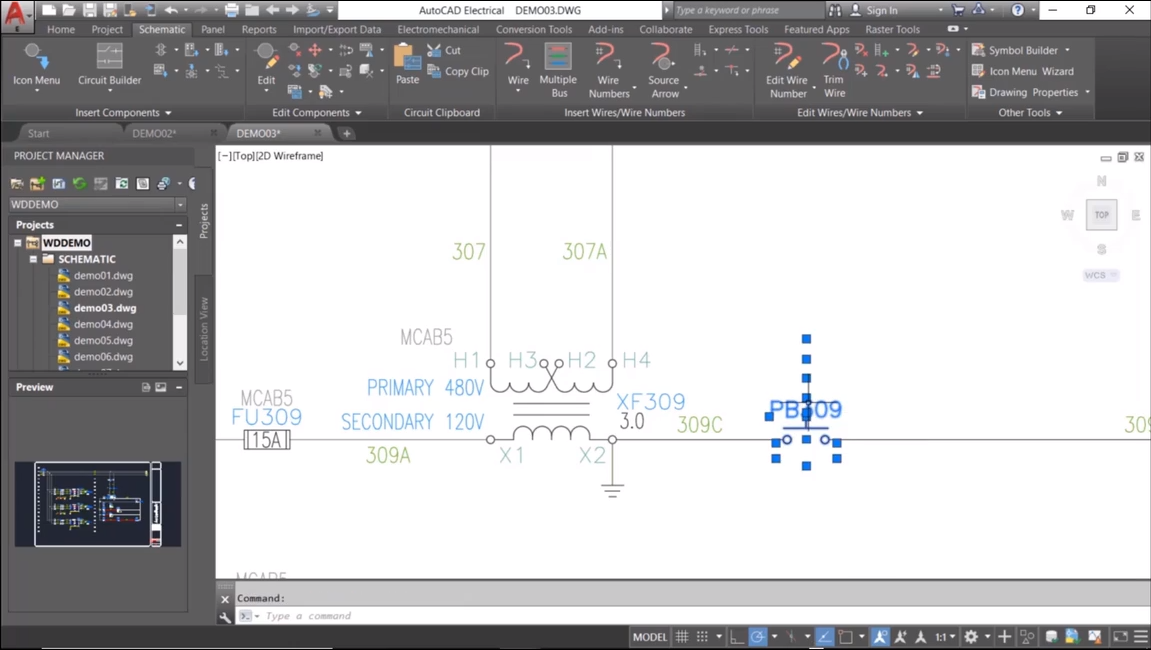
AutoCAD® with Electrical toolset. Source: Autodesk
Tinkercad® is a free, easy-to-use app for 3D design, electronics, and coding. It's used by teachers, kids, hobbyists, and designers to imagine, design, and make anything.
Revit® is a BIM (Building Information Modeling) software to drive efficiency and accuracy across the project lifecycle, from conceptual design, visualization, and analysis to fabrication and construction.
AEC(Architecture, Engineering & Construction) Collection® is a set of BIM and CAD tools for designers, engineers, and contractors that is supported by a cloud-based common data environment that facilitates project delivery from early-stage design through to construction.
Fusion 360® is an integrated CAD, CAM, CAE, and PCB software application. It unifies design, engineering, electronics, and manufacturing into a single software platform.
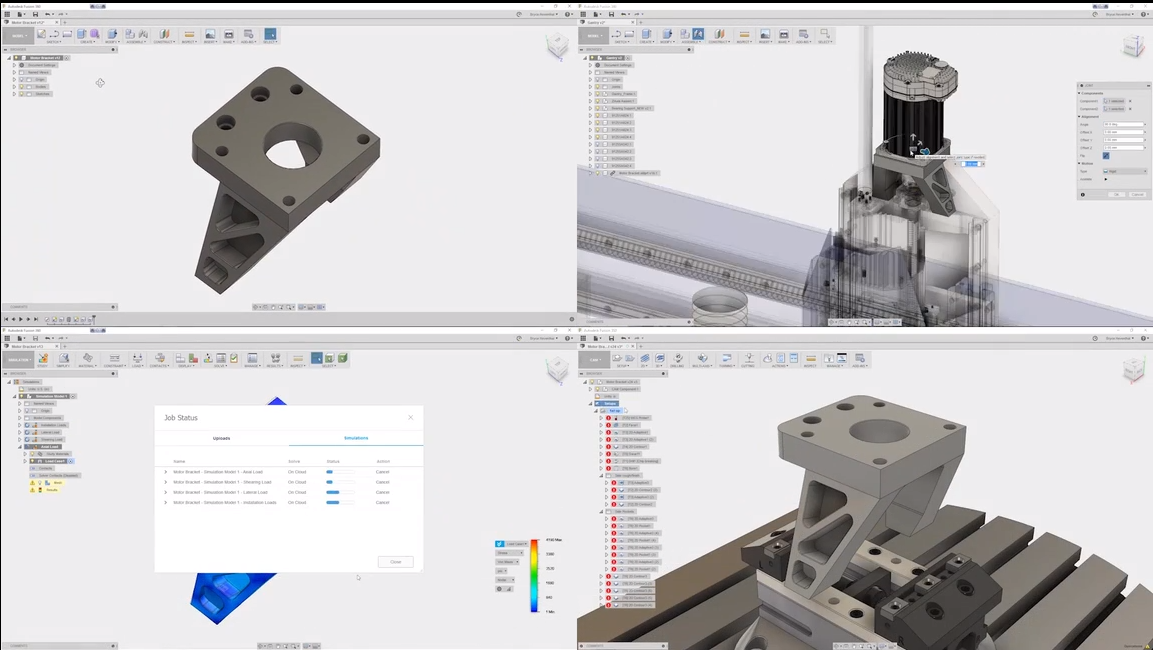
Autodesk® Fusion 360. Source: Autodesk
Fusion 360 with FeatureCAM® is a tool that gives you access to FeatureCAM Ultimate, PartMaker, Fusion 360, Fusion Team, and HSMWorks. With FeatureCAM CNC programming software uses manufacturing knowledge to intelligently make decisions, produce results, and remove repetitive processes.
Fusion 360 with Netfabb® is a software that offers a complete toolset for design and implementation for additive manufacturing. It streamlines workflows and automates processes around 3D print preparation. The software also includes access to Fusion 360, Fusion 360 Team, and additional capabilities through Fusion 360 Additive Extensions.
Fusion 360 Manage is a product lifecycle management platform that connects your people, processes, and data across departments and geographies. It gives you the flexibility to start today and expand tomorrow with PLM that adapts to your business.
Fusion Team is a cloud-based coll tool that helps eliminate the inefficiencies that disparate tools create when working with your internal and external teams.
Fusion 360 with PowerInspect® is a 3D measurement software offers a powerful way to inspect, validate, and manage quality for all measurement equipment. Now includes access to Fusion 360, Fusion 360 Team, and Fusion 360 – Machining Extension. PowerInspect includes comprehensive inspection tools that measure parts while they’re still in On Machine Verification (OMV). Machine tool probing helps you make informed scrap or rework decisions quickly.
Fusion 360 with PowerMill® CAM is a software provides expert CNC programming strategies for complex 3 and 5-axis manufacturing. This includes access to Fusion 360 and advanced manufacturing capabilities through Fusion 360 extensions.

CNC machining with Fusion 360 with PowerMill® CAM. Source: Autodesk
Fusion 360 with PowerShape® is a manufacturing CAD software combines surface, solid, and mesh modeling to help prepare molds, dies, and other complex parts for manufacture. This includes access to Fusion 360 and Fusion 360 Team.
Autodesk PartMaker® is a software that can produce CNC programs that drive main and sub-spindle machining operations. These can be used for turning, indexed and interpolated C-axis milling, Y-axis, and B-axis milling.
Robot Structural Analysis Professional is a structural load analysis software that verifies code compliance and uses BIM-integrated workflows to exchange data with Revit. It can help you to create more resilient, constructible designs that are accurate, coordinated, and connected to BIM.
Revit LT™ is a software that provides the most cost-effective BIM (Building Information Modeling) solution, you can produce high-quality 3D architectural designs and documentation.
Maya® is a 3D computer animation, modeling, simulation, and rendering software that can create realistic effects from explosions to cloth simulation.
Maya LT™ is a game design software for indie game makers that can create and animate realistic-looking characters, props, and environments using the sophisticated 3D modeling and animation tools.

Autodesk® Maya. Source:Autodesk
3DS Max® is a 3D modeling and rendering software for design visualization, games, and animation.

Autodesk® 3DS Max. Source:Autodesk
Arnold is an advanced Monte Carlo ray tracing(Global illumination) renderer that helps you work more efficiently.
ReCap™ is a Pro 3D scanning software to transform the physical world into a digital asset. With reality capture data you can better understand and verify existing and as-built conditions to gain insights and make better decisions.
Flame® is a 3D VFX and finishing software provides powerful tools for 3D compositing, visual effects, and editorial finishing. An integrated, creative environment means faster compositing, advanced graphics, color correction, and more.
Mudbox® is a 3D digital painting and sculpting software that let's you sculpt and paint highly detailed 3D geometry and textures.

Autodesk® Mudbox. Source:Autodesk
Character Generator® is a powerful 3D design and animation tools, Character Generator offers artists a web-based laboratory to create fully rigged 3D characters for animation packages and game engines.
Smoke® is a video effects software helps production studios increase productivity by combining editing workflows with node-based compositing tools in a timeline-centered editing environment.
ShotGrid formerly Shotgun Software, is software for creative project management software and review tools for film, TV, and games that streamlines workflows for creative studios.
Advance Steel® is a 3D modeling software for steel detailing, design, fabrication, and construction. it connects engineers and detailers through a seamless design and detailing workflow between Advance Steel and Revit, you can reduce the time required to move from design to fabrication while simultaneously reducing errors along the way.
Media & Entertainment Collection® is a collection that includes all of the tools you need to build a powerful and scalable 3D animation pipeline for complex simulations, effects, and rendering.
Civil 3D® is a civil engineering design software supports BIM (Building Information Modeling) with integrated features to improve drafting, design, and construction documentation.
Inventor® is a CAD software that provides professional-grade 3D mechanical design, documentation, and product simulation tools. Work efficiently with a powerful blend of parametric, direct, freeform, and rules-based design capabilities.
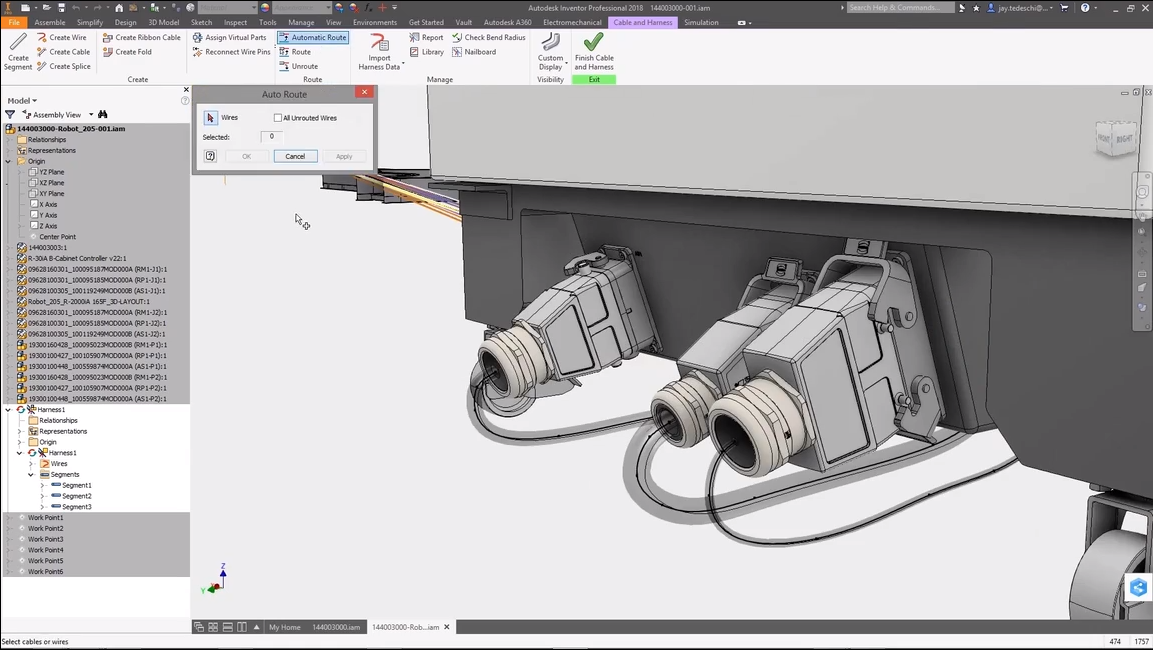
Autodesk® Inventor. Source:Autodesk
Inventor® CAM is an integrated CAM software for Inventor that simplifies CNC programming processes. Such as the machining workflow with CAD-embedded 2.5-axis to 5-axis milling, turning, and mill-turn capabilities.
Inventor Nastran® is a CAD-embedded finite element analysis software that delivers finite element analysis (FEA) tools for engineers and analysts. Simulation covers multiple analysis types, such as linear and nonlinear stress, dynamics, and heat transfer.
Inventor® Nesting is a CAD-embedded, true-shape nesting tools for Inventor that helps you optimize yield from flat raw material. Easily compare nesting studies to optimize efficiency and reduce costs, and export 3D models or DXF™ files of the completed nest for cutting path generation.
Inventor Tolerance Analysis® is an CAD-embedded tolerance stackup analysis software that is designed to help Inventor users make more informed decisions while specifying manufacturing tolerances.
Product Design & Manufacturing Collection is an integrated set of professional-grade applications that connect everyone, from concept to production, with shared tools to streamline your product development process.
Navisworks® is a project review software to improve BIM (Building Information Modeling) coordination. That can combine design and construction data into a single model.

Autodesk® Navisworks. Source:Autodesk
BIM Collaborate is cloud-based design collaboration and coordination software that connects AEC teams, helping you execute on design intent and deliver high-quality constructible models on a single platform.
BIM Collaborate Pro is cloud-based design collaboration and coordination software that connects AEC teams, helping you execute on design intent and deliver high-quality constructible models on a single platform.
InfraWorks® is a conceptual design software lets architecture, engineering, and construction professionals model, analyze, and visualize infrastructure design concepts within the context of the built and natural environment—improving decision making and accelerating project approvals.
SketchBook® is a drawing and painting software lets designers, architects, and concept artists sketch ideas quickly and create stunning illustrations.
Alias® is a product design software for sketching, concept modeling, surfacing, visualization. It can create and reuse templates across design and surfacing teams sharing surfacing language.
Assemble BIM Data is a tool that helps keep projects on track. Along with condition and connect BIM data to design reviews, estimating, change management, scheduling, work-in-place tracking, and more.
Autodesk® Forge is a cloud-based developer platform from Autodesk. That let's you access design and engineering data in the cloud with the Forge platform. Whether you want to automate processes, connect teams and workflows, or visualize your data using Forge APIs.
Autodesk® Rendering is a fast, high-resolution cloud rendering software that let's you produce stunning, high-quality renderings from designs and models with cloud rendering. This service uses cloud credits, which is a universal measure across Autodesk consumption-based cloud services to perform certain tasks in the cloud.
Autodesk® CFD is a computational fluid dynamics simulation software that engineers and analysts use to intelligently predict how liquids and gases will perform. It helps to minimize the need for physical prototypes while providing deeper insight into fluid flow design performance.
Autodesk® Drive is a way to securely store, preview, and share your 2D and 3D design data.
Autodesk® Viewer is a tool that supports most 2D and 3D files, including DWG, STEP, DWF, RVT, and Solidworks, and works with over 80 file types on any device. Get the feedback you need with Autodesk Viewer’s annotation and drawing tools for easy online collaboration.
Autodesk BIM 360® is a tool is part of the Autodesk Construction Cloud, connecting workflows, teams, and data to help you build better.
Autodesk® Build is a construction management software for field execution and project management that empowers you to seamlessly collaborate and deliver construction projects on time, on budget.
Autodesk® Takeoff is a tool that helps you work with competitive bids that are generated from accurate estimates produced from integrated 2D takeoffs and 3D quantities.
BuildingConnected is the argest real-time construction network that connects owners and builders through an easy-to-use platform to streamline the bid and risk management process.
Bid Board Pro is a tool that helps you see all bid invites across your entire office or division from one place. Know what needs to get done, who’s responsible for it and when it’s due. Track project files, deadlines and more during each stage of the bidding process.
TradeTapp is a tool that helps you significantly decrease the time it takes to analyze subcontractor risk, annually or for a specific project. Advanced risk profiles enable a streamlined process and offer financial benchmarking, key metric calculations, capacity recommendations and safety performance history.
Design Review is a CAD viewer software lets you view, mark up, print, and track changes to 2D and 3D files for free—without the original design software. Work with a variety of file formats, including: DWF, DWFx, DWG, and DXF (requires installation of free DWG TrueView software); Adobe PDF; as well as image file types such as.bmp, .jpg, .gif, .pcx, .pct, .png, .rlc, .tga, .tif, .mil, .cal, and more.
EAGLE is electronic design automation (EDA) software that lets printed circuit board (PCB) designers seamlessly connect schematic diagrams, component placement, PCB routing, and comprehensive library content.
Fabrication ESTmep™, CADmep™, and CAMduct™ is a software that provides an integrated set of tools for MEP specialty contractors to estimate, detail, and drive fabrication of mechanical building systems. Also, create high LOD models of piping, plumbing, or ductwork systems in AutoCAD using CADmep. Content libraries used in ESTmep, CADmep, and CAMduct can also be used in Revit to support BIM workflows. Available stand-alone or in the Architecture, Engineering & Construction Collection..
Formit is an architectural modeling software for BIM-based 3D sketching. The pro version of FormIt includes the tools in the FormIt app, plus Dynamo computation, and collaboration and analysis features.
Helius Composite is a tool that can help you simulate the material behavior of compound components. Built-in solvers minimize the need to have secondary finite element analysis (FEA) software to analyze material characteristics more quickly.
Helius PFA is a progressive failure analysis software that predicts failure stages of composite materials. Helius PFA enables you to integrate composite and elastomeric material properties into your finite element analysis (FEA) program.
HSMWorks is an ambedded CAM software for SOLIDWORKS® to design and generate CAM toolpaths without the hassle of changing software. Reduce cycle time and rework with CAD-embedded 2.5 to 5-axis milling, turning, and mill-turn capabilities. HSMWorks is included with your Fusion 360 subscription.
Insight is a building performance analysis software that empowers architects and engineers to design more energy-efficient buildings with advanced simulation engines and building performance analysis data integrated in Revit.
Moldflow® is a software tool that lets you troubleshoot problems with plastic injection and compression molding for design and manufacturing. Advanced tools and a simplified user interface help you address manufacturing challenges, such as part warpage, cooling channel efficiency, and cycle time reduction.
MotionBuilder® is a 3D character animation software. Work in an interactive environment optimized to help you work faster and more efficiently without compromising creativity.
PlanGrid Build is a Construction app built for the field. It allows you to complete tasks from anywhere on the jobsite with seamless access to Autodesk Build data, even when you’re offline.
Point Layout is a construction layout software helps contractors and subcontractors bring model accuracy to the field and back. Connect models to layout and quality workflows. Get direct file format compatibility with robotic total station hardware, including Leica, Topcon, and Trimble.
Structural Bridge Design® is a bridge analysis software for small to medium-span bridges used by engineers to deliver design reports faster.
Vault® is a product data management (PDM) software helps streamline workflows. Everyone works from a central source of organized data—collaborating, reducing errors, and saving time.
Vehicle Tracking® is a swept path analysis and design software to facilitate parking lot layout, roundabout design, and other design challenges impacted by vehicle movement.
VRED® is a 3D visualization software helps automotive designers and engineers create product presentations, design reviews, and virtual prototypes using interactive GPU raytracing and both analytic and cloud-rendering modes.
Within Medical® is a 3D printing orthopedic implant design software that enables designers to create medical implants to aid osseointegration.
Pype is a tool that helps you reduce project risk and strengthen client relationships by automating processes that are critical for owner satisfaction and contract compliance.
Pype Closeout is a tool provides a single portal for closeout documentation management, with digital document collection from subcontractors and powerful reporting dashboards. With subcontractor outreach automated, the Closeout platform ensures contract compliance and helps you get paid faster.
Pype SmartPlans is a tool that locates and extracts all submittals from your uploaded plans automatically. Export product, equipment, and finish schedules into excel with a single click. SmartPlans’ powerful automation uses cutting edge artificial intelligence and machine learning to intelligently read your drawings to extract submittals and schedules.
CAMplete is a software tool that provides G-code post-processing, verification, and simulation for different kinds of CNC machinery. Import data from leading CAM software then use proven post-processors and highly accurate 3D machine models, developed in partnership with machine tool builders, to rapidly produce high-quality, collision free NC machining code.
Vault PLM is a tool that combines Vault Professional with Fusion Lifecycle for enterprise-wide collaboration and product lifecycle management.
LiDAR Development

LiDAR Learning Resources
Introduction to Lidar Course - NOAA
Lidar 101:An Introduction to Lidar Technology, Data, and Applications(PDF) - NOAA
Understanding LiDAR Technologies - GIS Lounge
LiDAR University Free Lidar Training Courses on MODUS AI
Light Detection and Ranging Sensors Course on Coursera
Quick Introduction to Lidar and Basic Lidar Tools(PDF)
LiDAR Tools & Frameworks
Light Detection and Ranging (lidar) is a technology used to create high-resolution models of ground elevation with a vertical accuracy of 10 centimeters (4 inches). Lidar equipment, which includes a laser scanner, a Global Positioning System (GPS), and an Inertial Navigation System (INS), is typically mounted on a small aircraft. The laser scanner transmits brief pulses of light to the ground surface. Those pulses are reflected or scattered back and their travel time is used to calculate the distance between the laser scanner and the ground. Lidar data is initially collected as a “point cloud” of individual points reflected from everything on the surface, including structures and vegetation. To produce a “bare earth” Digital Elevation Model (DEM), structures and vegetation are stripped away.
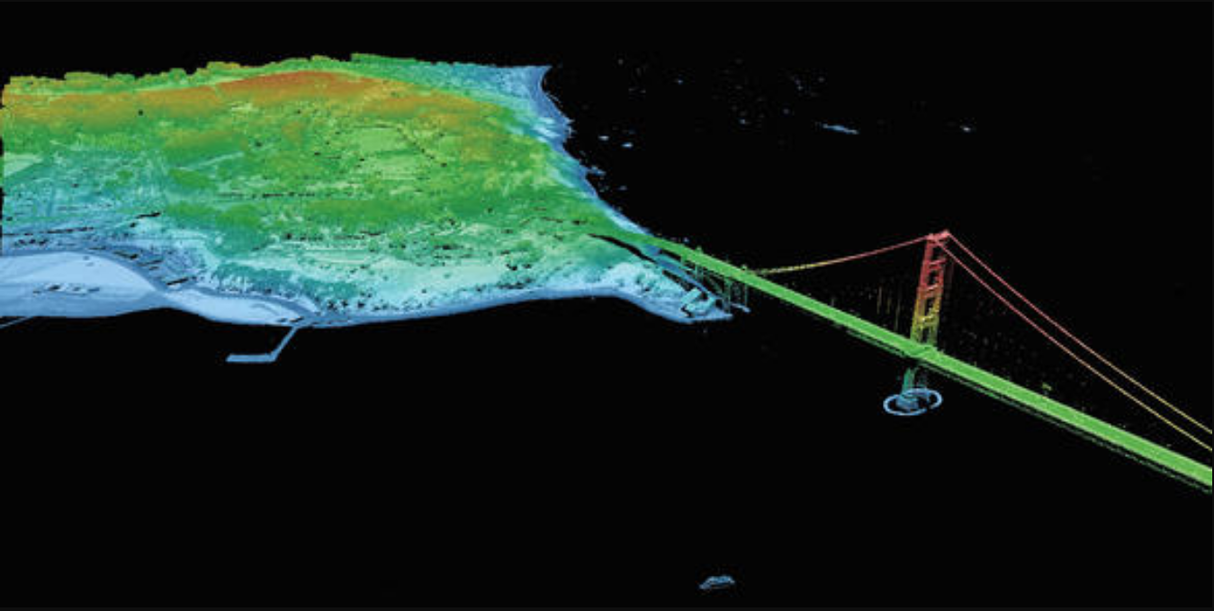
3D Data Visualization of Golden Gate Bridge. Source: USGS
Mola is a Modular Optimization framework for Localization and mApping (MOLA).

3D LiDAR SLAM from KITTI dataset. Source: MOLA
Lidar Toolbox™ is a MATLAB tool that provides algorithms, functions, and apps for designing, analyzing, and testing lidar processing systems. You can perform object detection and tracking, semantic segmentation, shape fitting, lidar registration, and obstacle detection. Lidar Toolbox supports lidar-camera cross calibration for workflows that combine computer vision and lidar processing.
Automated Driving Toolbox™ is a MATLAB tool that provides algorithms and tools for designing, simulating, and testing ADAS and autonomous driving systems. You can design and test vision and lidar perception systems, as well as sensor fusion, path planning, and vehicle controllers. Visualization tools include a bird’s-eye-view plot and scope for sensor coverage, detections and tracks, and displays for video, lidar, and maps. The toolbox lets you import and work with HERE HD Live Map data and OpenDRIVE® road networks. It also provides reference application examples for common ADAS and automated driving features, including FCW, AEB, ACC, LKA, and parking valet. The toolbox supports C/C++ code generation for rapid prototyping and HIL testing, with support for sensor fusion, tracking, path planning, and vehicle controller algorithms.
Microsoft AirSim is a simulator for drones, cars and more, built on Unreal Engine (with an experimental Unity release). AirSim is open-source, cross platform, and supports software-in-the-loop simulation with popular flight controllers such as PX4 & ArduPilot and hardware-in-loop with PX4 for physically and visually realistic simulations. It is developed as an Unreal plugin that can simply be dropped into any Unreal environment. AirSim is being developed as a platform for AI research to experiment with deep learning, computer vision and reinforcement learning algorithms for autonomous vehicles.

3D Autonomous Vehicle Simulation in AirSim. Source: Microsoft
LASer(LAS) is a public file format for the interchange of 3-dimensional point cloud data data between data users. Although developed primarily for exchange of lidar point cloud data, this format supports the exchange of any 3-dimensional x,y,z tuplet. This binary file format is an alternative to proprietary systems or a generic ASCII file interchange system used by many companies. The problem with proprietary systems is obvious in that data cannot be easily taken from one system to another. There are two major problems with the ASCII file interchange. The first problem is performance because the reading and interpretation of ASCII elevation data can be very slow and the file size can be extremely large even for small amounts of data. The second problem is that all information specific to the lidar data is lost. The LAS file format is a binary file format that maintains information specific to the lidar nature of the data while not being overly complex.
3D point cloud is a set of data points defined in a given three-dimensional coordinates system.. Point clouds can be produced directly by 3D scanner which records a large number of points returned from the external surfaces of objects or earth surface. These data are exchanged between LiDAR users mainly through LAS format files (.las).
ArcGIS Desktop is powerful and cost-effective desktop geographic information system (GIS) software. It is the essential software package for GIS professionals. ArcGIS Desktop users can create, analyze, manage, and share geographic information so decision-makers can make intelligent, informed decisions.
USGS 3DEP Lidar Point Cloud Now Available as Amazon Public Dataset
National Map Data Download and Visualization Services
USGS Lidar Base Specification(LBS) online edition
Game Development


Game Engines
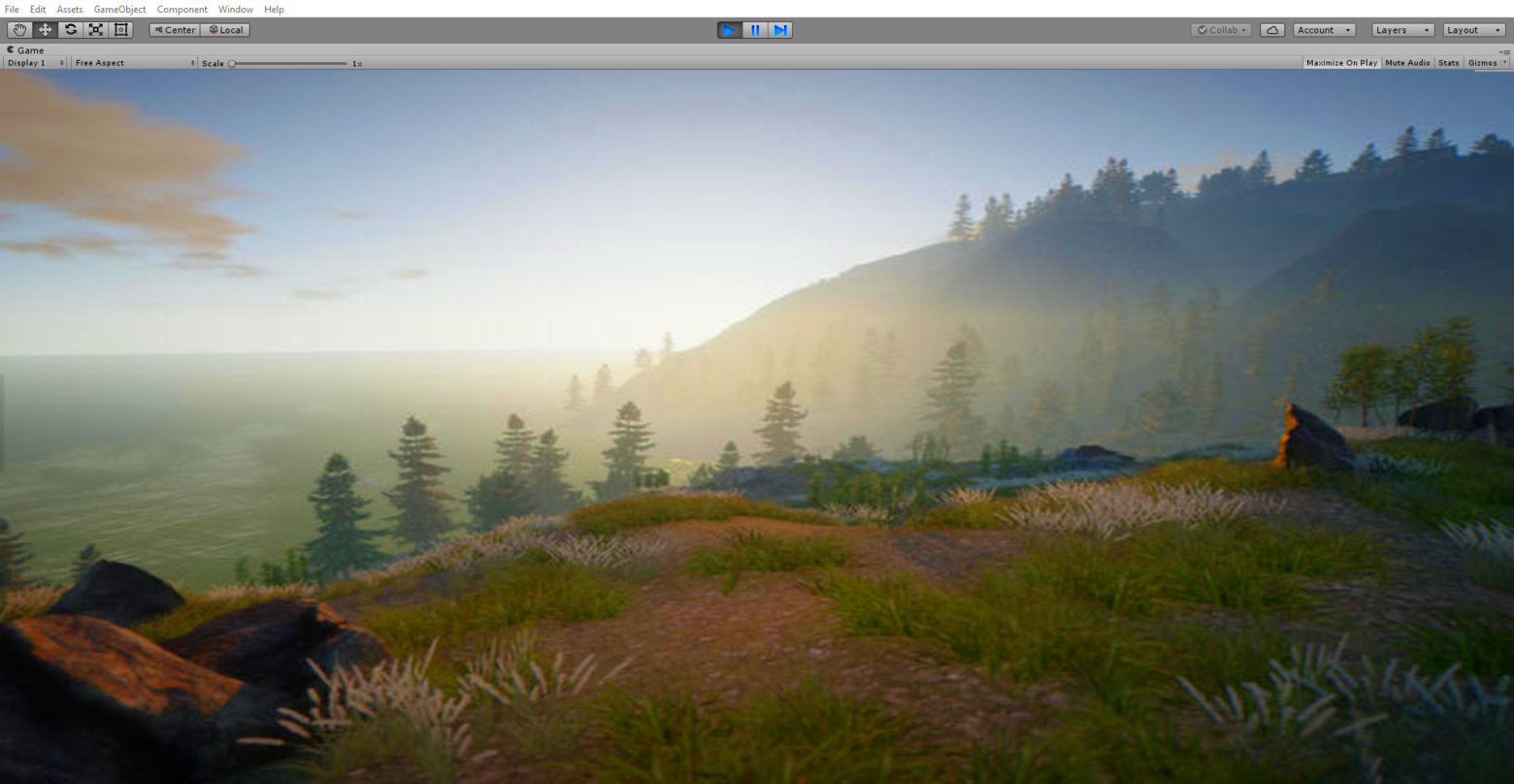


If you would like to Donate to the Godot Project

If you would like to Donate to the Blender Project

Checkout AWS Lumberyard(based on CryEngine)

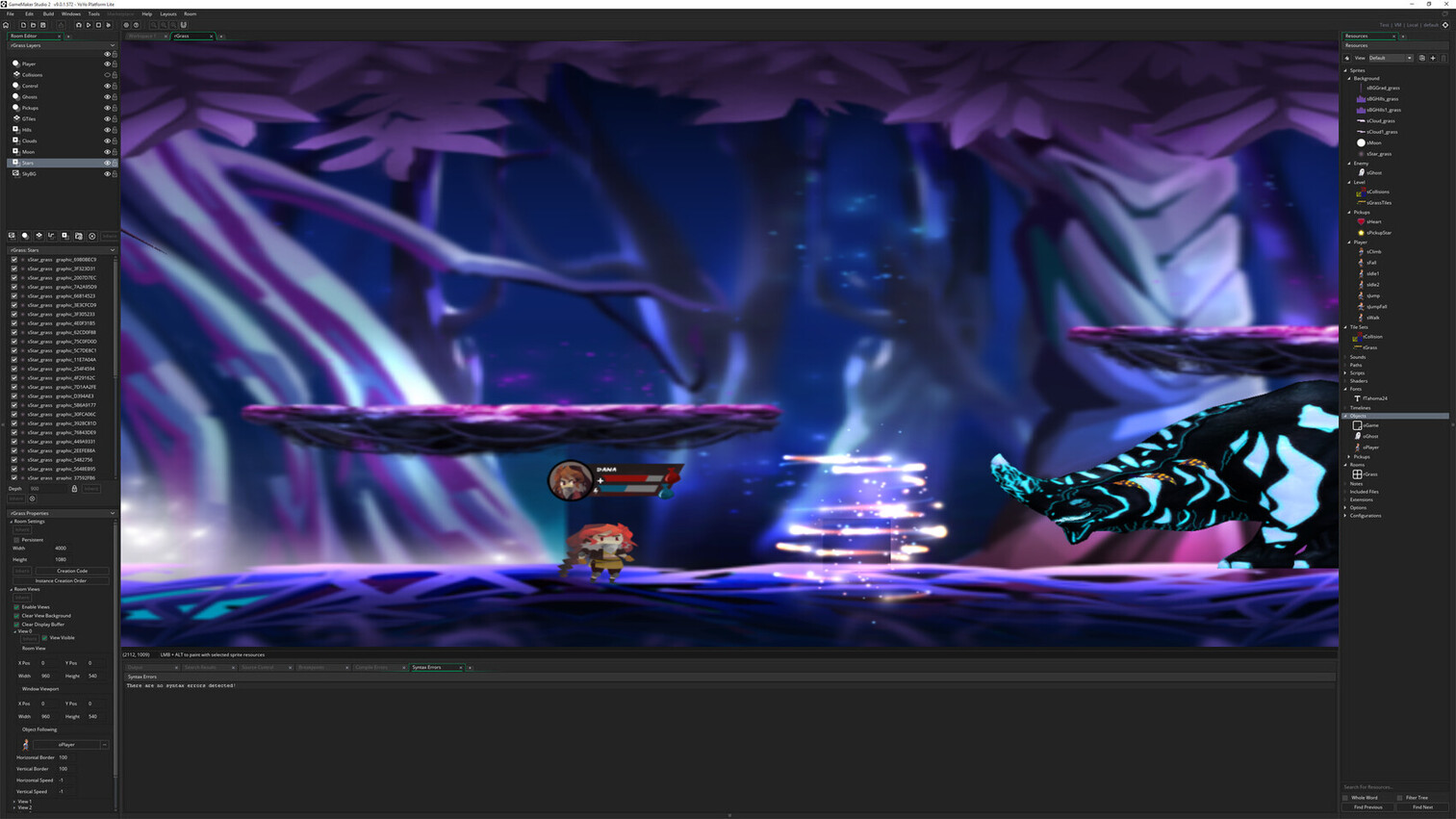
Game Development Learning Resources
Unreal Online Learning is a free learning platform that offers hands-on video courses and guided learning paths.
Unreal Engine Authorized Training Program
Unreal Engine Training & Simulation
Getting Started with DirectX 12 Ultimate
Getting Started with Apple Metal
Game Design Online Courses from Udemy
Game Design Online Courses from Skillshare
Learn Game Design with Online Courses and Classes from edX
Game Design Courses from Coursera
Game Design and Development Specialization Course from Coursera
Game Development Tools
Unreal Engine is a game engine developed by Epic Games with the world's most open and advanced real-time 3D creation tool. Continuously evolving to serve not only its original purpose as a state-of-the-art game engine, today it gives creators across industries the freedom and control to deliver cutting-edge content, interactive experiences, and immersive virtual worlds.
Unity is a cross-platform game development platform. Use Unity to build high-quality 3D and 2D games, deploy them across mobile, desktop, VR/AR, consoles or the Web, and connect with loyal and enthusiastic players and customers.
Unigine is a cross-platform game engine designed for development teams (C++/C# programmers, 3D artists) working on interactive 3D apps.
Frostbite is a game engine developed by DICE, designed for cross-platform use on Microsoft Windows and game consoles such as PlayStation 3 Xbox 360, PlayStation 4, Xbox One, Nintendo Switch, PlayStation 5, and Xbox Series X/S.
Panda3D is a game engine, a framework for 3D rendering and game development for Python and C++ programs, developed by Disney and CMU. Panda3D is open-source and free for any purpose, including commercial ventures.
Source 2 is a 3D video game engine in development by Valve as a successor to Source. It is used in Dota 2, Artifact, Dota Underlords, parts of The Lab, SteamVR Home, and Half-Life: Alyx.
Havok is a middleware software suite that provides a realistic physics engine component and related functions to video games. It is supported and optimized across all major platforms, including Nintendo Switch, PlayStation®, Stadia, and Xbox. Along with integrations for Unity and Unreal Engine and are used in countless proprietary game engines.
AutoDesk 3ds Max is a professional software program for 3D modeling, animation, rendering, and visualization. 3ds Max allows you to create stunning game environments, design visualizations, and virtual reality experiences.
Houdini is a 3D procedural software for modeling, rigging, animation, VFX, look development, lighting and rendering in film, TV, advertising and video game pipelines.
A-Frame is a web framework for building virtual reality experiences in WebVR with HTML and Entity-Component. A-Frame works on Vive, Rift, desktop, mobile platforms.
AppGameKit is a powerful game development engine, ideal for Hobbyist and Indie developers. Where you can start coding in the easy to learn AppGameKit BASIC or use the libraries in C++ & XCode.
Amazon Lumberyard is an open source, AAA game engine(based on CryEngine) that gives you the tools you need to create high quality games. Deeply integrated with AWS and Twitch, Amazon Lumberyard includes full source code, allowing you to customize your project at any level.
Blender is the free and open source 3D creation suite. It supports the entirety of the 3D pipeline—modeling, rigging, animation, simulation, rendering, compositing and motion tracking, video editing and 2D animation pipeline.
CryEngine is a powerful real-time game development platform created by Crytek.
GameMaker Studio 2 is the latest and greatest incarnation of GameMaker. It has everything you need to take your idea from concept to finished game. With no barriers to entry and powerful functionality, GameMaker Studio 2 is the ultimate 2D development environment.
Godot is a feature-packed, cross-platform game engine to create 2D and 3D games from a unified interface. It provides a comprehensive set of common tools, so that users can focus on making games without having to reinvent the wheel. Games can be exported in one click to a number of platforms, including the major desktop platforms (Linux, Mac OSX, Windows) as well as mobile (Android, iOS) and web-based (HTML5) platforms.
Open Graphics Library(OpenGL) is an API used acrossed mulitple programming languages and platforms for hardware-accelerated rendering of 2D/3D vector graphics currently developed by the Khronos Group.
Open Computing Language (OpenCL) is an open standard for parallel programming of heterogeneous platforms consisting of CPUs, GPUs, and other hardware accelerators found in supercomputers, cloud servers, personal computers, mobile devices and embedded platforms.
OpenGL Shading Language(GLSL) is a High Level Shading Language based on the C-style language, so it covers most of the features a user would expect with such a language. Such as control structures (for-loops, if-else statements, etc) exist in GLSL, including the switch statement.
High Level Shading Language(HLSL) is the High Level Shading Language for DirectX. Using HLSL, the user can create C-like programmable shaders for the Direct3D pipeline. HLSL was first created with DirectX 9 to set up the programmable 3D pipeline.
DirectX 12 Ultimate is an API(for high performance 2D & 3D graphics) from Microsoft. DirectX 12 Ultimate brings support for ray tracing, mesh shaders, variable rate shading, and sampler feedback. Available in Windows 2004 version(May 2020 Update).
Vulkan is a modern cross-platform graphics and compute API that provides high-efficiency, cross-platform access to modern GPUs used in a wide variety of devices from PCs and consoles to mobile phones and embedded platforms. Vulkan is currently in development by the Khronos consortium.
Metal is a low-level GPU programming framework used for rendering 2D and 3D graphics on Apple platforms such as iOS, iPadOS, macOS, watchOS and tvOS.
MoltenVK is an implementation of Vulkan running on iOS and macOS using Apple's Metal graphics framework.
MoltenGL is an implementation of the OpenGL ES 2.0 API that runs on Apple's Metal graphics framework.
Mesa 3D Graphics Library is a project began as an open-source implementation of the OpenGL specification. A system for rendering interactive 3D graphics. Mesa ties into several other open-source projects: the Direct Rendering Infrastructure, X.org, and Wayland to provide OpenGL support on Linux, FreeBSD, and other operating systems.
OpenGL ES is the mobile subset of OpenGL. It's supported on all major mobile platforms, and is also the base for WebGL.
OpenCL is a framework for writing programs that execute across heterogeneous platforms consisting of CPUs, GPUs, DSPs, FPGAs and other processors or hardware accelerators.
EGL is an interface between Khronos rendering APIs such as OpenGL or OpenVG and the underlying native platform window system.
VDPAU is the Video Decode and Presentation API for UNIX. It provides an interface to video decode acceleration and presentation hardware present in modern GPUs.
VA API is an open-source library and API specification, which provides access to graphics hardware acceleration capabilities for video processing.
XvMC is an extension of the X video extension (Xv) for the X Window System. The XvMC API allows video programs to offload portions of the video decoding process to the GPU hardware.
AMD Radeon ProRender is a powerful physically-based rendering engine that enables creative professionals to produce stunningly photorealistic images on virtually any GPU, any CPU, and any OS in over a dozen leading digital content creation and CAD applications.
NVIDIA Omniverse is a powerful, multi-GPU, real-time simulation and collaboration platform for 3D production pipelines based on Pixar's Universal Scene Description and NVIDIA RTX.
LibGDX is a cross-platform Java game development framework based on OpenGL (ES) that works on Windows, Linux, Mac OS X, Android, your WebGL enabled browser and iOS.
cocos2d-x is a multi-platform framework for building 2d games, interactive books, demos and other graphical applications. It is based on cocos2d-iphone, but instead of using Objective-C, it uses C++. It works on iOS, Android, macOS, Windows and Linux.
MonoGame is a framework for creating powerful cross-platform games. The spiritual successor to XNA with thousands of titles shipped across desktop, mobile, and console platforms. MonoGame is a fully managed .NET open source game framework without any black boxes.
Three.js is a cross-browser JavaScript library and application programming interface used to create and display animated 3D computer graphics in a web browser using WebGL.
Superpowers is a downloadable HTML5 app for real-time collaborative projects . You can use it solo like a regular offline game maker, or setup a password and let friends join in on your project through their Web browser.
URHO3D is a free lightweight, cross-platform 2D and 3D game engine implemented in C++ and released under the MIT license. Greatly inspired by OGRE and Horde3D.
Vivox is a voice & text chat platform that's trusted by the world's biggest gaming brands and titles such as Fortnite, PUBG, League of Legends, and Rainbow Six Siege.
HGIG is a volunteer group of companies from the game and TV display industries that meet to specify and make available for the public guidelines to improve consumer gaming experiences in HDR.
GameBlocks is a Server Side Anti-Cheat & Middleware software.
Linear Algebra
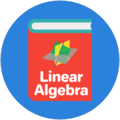
Linear Algebra Learning Resources
Linear algebra is the math of vectors and matrices. The only prerequisite for this guide is a basic understanding of high school math concepts like numbers, variables, equations, and the fundamental arithmetic operations on real numbers: addition (denoted +), subtraction (denoted −), multiplication (denoted implicitly), and division (fractions). Also, you should also be familiar with functions that take real numbers as inputs and give real numbers as outputs, f : R → R.
Linear Algebra - Online Courses | Harvard University
Linear Algebra | MIT Open Learning Library
Top Linear Algebra Courses on Coursera
Mathematics for Machine Learning: Linear Algebra on Coursera
Top Linear Algebra Courses on Udemy
Learn Linear Algebra with Online Courses and Classes on edX
The Math of Data Science: Linear Algebra Course on edX
Linear Algebra in Twenty Five Lectures | UC Davis
Linear Algebra | UC San Diego Extension
Linear Algebra for Machine Learning | UC San Diego Extension
Introduction to Linear Algebra, Interactive Online Video | Wolfram
Linear Algebra Resources | Dartmouth
Defintions
i. Vector operations
We now define the math operations for vectors. The operations we can perform on vectors ~u = (u1, u2, u3) and ~v = (v1, v2, v3) are: addition, subtraction, scaling, norm (length), dot product, and cross product:
The dot product and the cross product of two vectors can also be described in terms of the angle θ between the two vectors.

Vector Operations. Source: slideserve

Vector Operations. Source: pinterest
ii. Matrix operations
We denote by A the matrix as a whole and refer to its entries as aij .The mathematical operations defined for matrices are the following:
• determinant (denoted det(A) or |A|) Note that the matrix product is not a commutative operation.
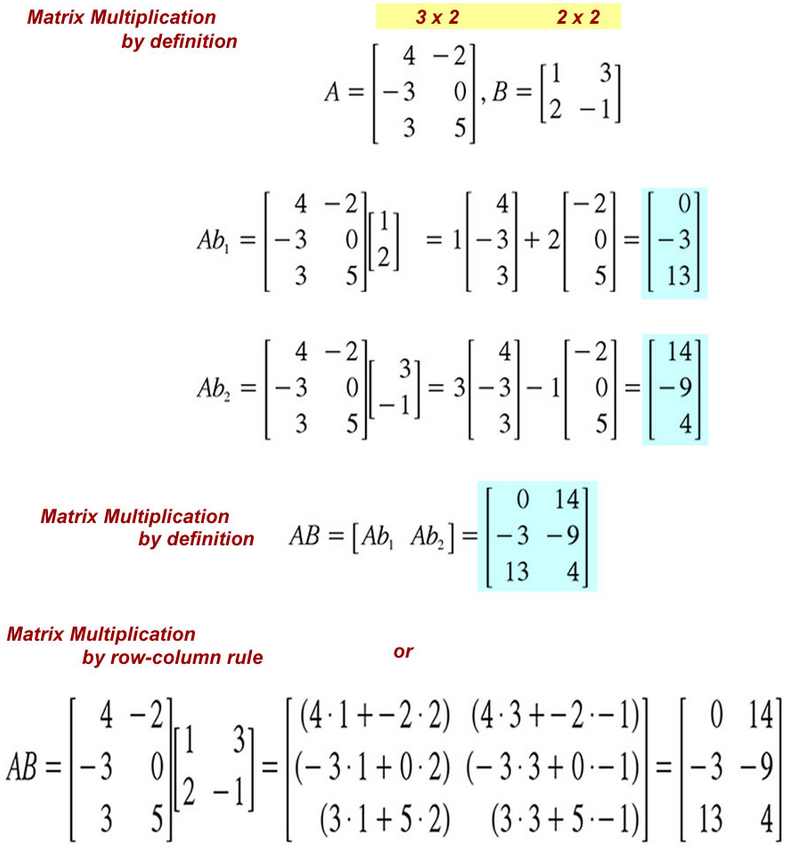
Matrix Operations. Source: SDSU Physics

Check for modules that allow Matrix Operations. Source: DPS Concepts
iii. Matrix-vector product
The matrix-vector product is an important special case of the matrix product.
There are two fundamentally different yet equivalent ways to interpret the matrix-vector product. In the column picture, (C), the multiplication of the matrix A by the vector ~x produces a linear combination of the columns of the matrix: ~y = A~x = x1A[:,1] + x2A[:,2], where A[:,1] and A[:,2] are the first and second columns of the matrix A. In the row picture, (R), multiplication of the matrix A by the vector ~x produces a column vector with coefficients equal to the dot products of rows of the matrix with the vector ~x.

Matrix-vector product. Source: wikimedia

Matrix-vector Product. Source: mathisfun
iv. Linear transformations
The matrix-vector product is used to define the notion of a linear transformation, which is one of the key notions in the study of linear algebra. Multiplication by a matrix A ∈ R m×n can be thought of as computing a linear transformation TA that takes n-vectors as inputs and produces m-vectors as outputs:

Linear Transformations. Source: slideserve

Elementary matrices for linear transformations in R^2. Source:Quora
v. Fundamental vector spaces

Fundamental theorem of linear algebra for Vector Spaces. Source: wikimedia

Fundamental theorem of linear algebra. Source: wolfram
Computational Linear Algebra
i. Solving systems of equations

System of Linear Equations by Graphing. Source: slideshare
ii. Systems of equations as matrix equations

Systems of equations as matrix equations. Source: mathisfun
Computing the Inverse of a Matrix
In this section we’ll look at several different approaches for computing the inverse of a matrix. The matrix inverse is unique so no matter which method we use to find the inverse, we’ll always obtain the same answer.

Inverse of 2x2 Matrix. Source: pinterest
i. Using row operations
One approach for computing the inverse is to use the Gauss–Jordan elimination procedure.

Elementray row operations. Source: YouTube
ii. Using elementary matrices
Every row operation we perform on a matrix is equivalent to a leftmultiplication by an elementary matrix.

Elementary Matrices. Source: SDSU Physics
iii. Transpose of a Matrix
Finding the inverse of a matrix is to use the Transpose method.
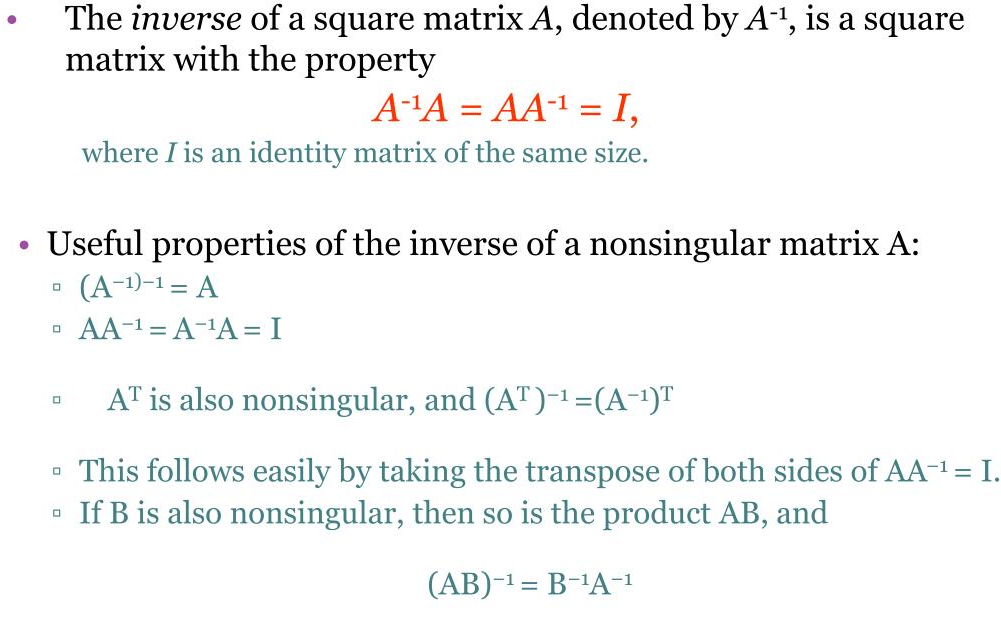
Transpose of a Matrix. Source: slideserve
Other Linear Topics
In this section discuss a number of other important topics of linear algebra.
i. Basis
Intuitively, a basis is any set of vectors that can be used as a coordinate system for a vector space. You are certainly familiar with the standard basis for the xy-plane that is made up of two orthogonal axes: the x-axis and the y-axis.
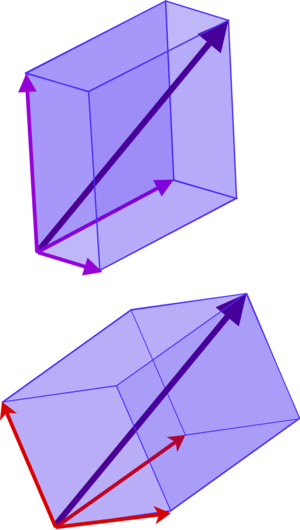
Basis. Source: wikimedia

Change of Basis. Source: wikimedia
ii. Matrix representations of linear transformations

Matrix representations of linear transformations. Source: slideserve
iii. Dimension and Basis for Vector Spaces
The dimension of a vector space is defined as the number of vectors in a basis for that vector space. Consider the following vector space S = span{(1, 0, 0),(0, 1, 0),(1, 1, 0)}. Seeing that the space is described by three vectors, we might think that S is 3-dimensional. This is not the case, however, since the three vectors are not linearly independent so they don’t form a basis for S. Two vectors are sufficient to describe any vector in S; we can write S = span{(1, 0, 0),(0, 1, 0)}, and we see these two vectors are linearly independent so they form a basis and dim(S) = 2. There is a general procedure for finding a basis for a vector space. Suppose you are given a description of a vector space in terms of m vectors V = span{~v1, ~v2, . . . , ~vm} and you are asked to find a basis for V and the dimension of V. To find a basis for V, you must find a set of linearly independent vectors that span V. We can use the Gauss–Jordan elimination procedure to accomplish this task. Write the vectors ~vi as the rows of a matrix M. The vector space V corresponds to the row space of the matrix M. Next, use row operations to find the reduced row echelon form (RREF) of the matrix M. Since row operations do not change the row space of the matrix, the row space of reduced row echelon form of the matrix M is the same as the row space of the original set of vectors. The nonzero rows in the RREF of the matrix form a basis for vector space V and the numbers of nonzero rows is the dimension of V.

Basis and Dimension. Source: sliderserve
iv. Row space, columns space, and rank of a matrix
Recall the fundamental vector spaces for matrices that we defined in Section II-E: the column space C(A), the null space N (A), and the row space R(A). A standard linear algebra exam question is to give you a certain matrix A and ask you to find the dimension and a basis for each of its fundamental spaces. In the previous section we described a procedure based on Gauss–Jordan elimination which can be used “distill” a set of linearly independent vectors which form a basis for the row space R(A). We will now illustrate this procedure with an example, and also show how to use the RREF of the matrix A to find bases for C(A) and N (A).

Row space and Column space. Source: slideshare

Row space and Column space. Source: slideshare
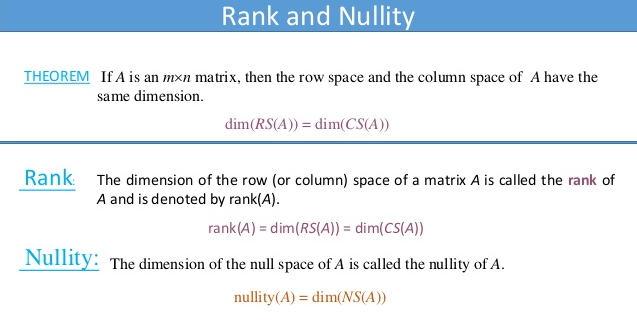
Rank and Nullity. Source: slideshare
v. Invertible matrix theorem
There is an important distinction between matrices that are invertible and those that are not as formalized by the following theorem. Theorem. For an n×n matrix A, the following statements are equivalent:

Invertible Matrix theorem. Source: SDSU Physics
vi. Determinants
The determinant of a matrix, denoted det(A) or |A|, is a special way to combine the entries of a matrix that serves to check if a matrix is invertible or not.

Determinant of a Square Matrix. Source: stackexchange

Determinant of matrix. Source: onlinemathlearning
vii. Eigenvalues and eigenvectors
The set of eigenvectors of a matrix is a special set of input vectors for which the action of the matrix is described as a simple scaling. When a matrix is multiplied by one of its eigenvectors the output is the same eigenvector multiplied by a constant A~eλ = λ~eλ. The constant λ is called an eigenvalue of A.

Generalized EigenVectors. Source: YouTube
viii. Linear Regression
Linear regression is an approach to model the relationship between two variables by fitting a linear equation to observed data. One variable is considered to be an explanatory variable, and the other is considered to be a dependent variable.

Multiple Linear Regression. Source: Medium
Algorithms
Fuzzy logic is a heuristic approach that allows for more advanced decision-tree processing and better integration with rules-based programming.

Architecture of a Fuzzy Logic System. Source: ResearchGate
Support Vector Machine (SVM) is a supervised machine learning model that uses classification algorithms for two-group classification problems.
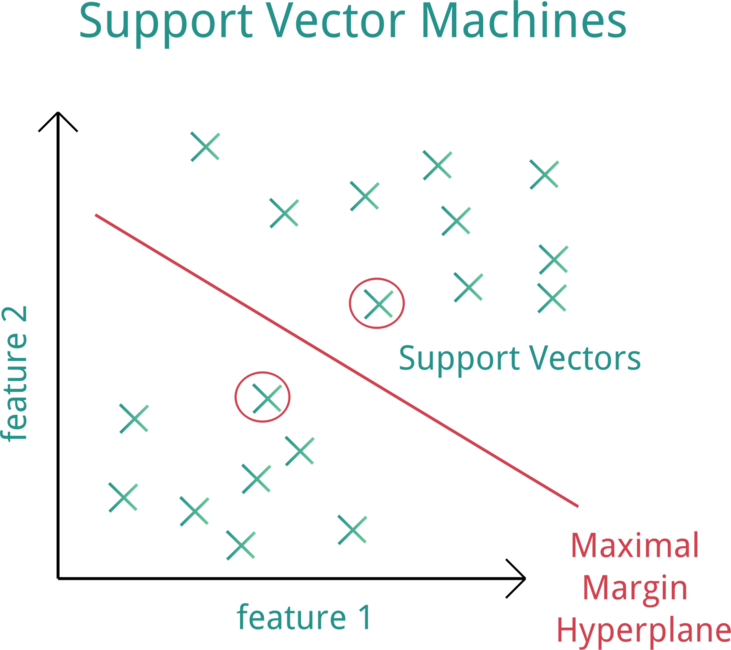
Support Vector Machine (SVM). Source:OpenClipArt
Neural networks are a subset of machine learning and are at the heart of deep learning algorithms. The name/structure is inspired by the human brain copying the process that biological neurons/nodes signal to one another.
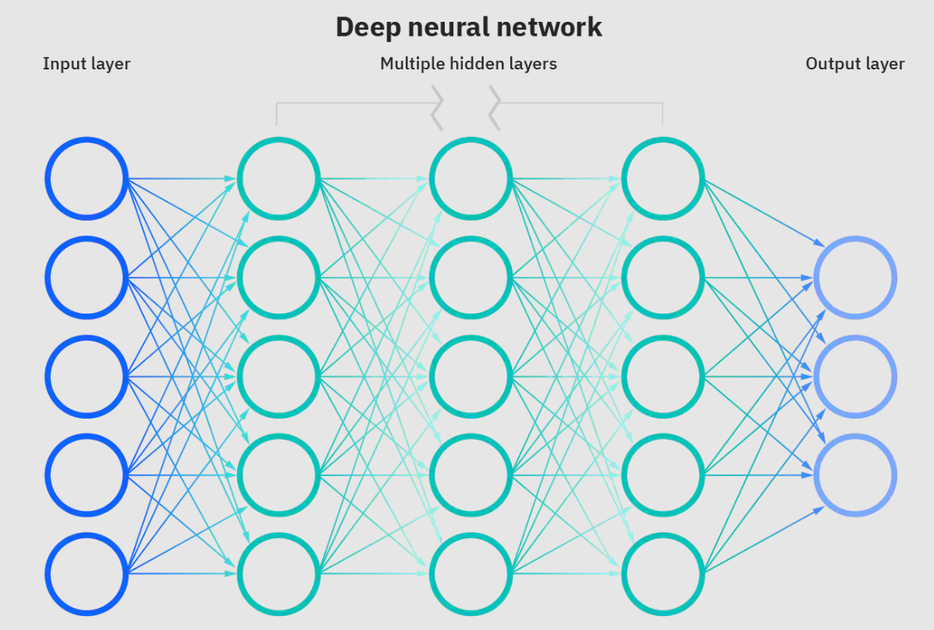
Deep neural network. Source: IBM
Convolutional Neural Networks (R-CNN) is an object detection algorithm that first segments the image to find potential relevant bounding boxes and then run the detection algorithm to find most probable objects in those bounding boxes.
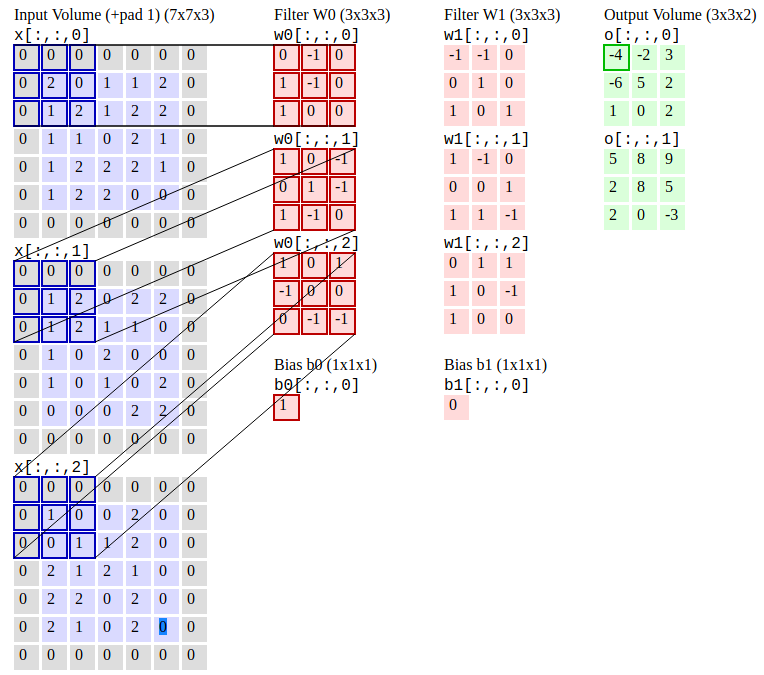
Convolutional Neural Networks. Source:CS231n
Recurrent neural networks (RNNs) is a type of artificial neural network which uses sequential data or time series data.

Recurrent Neural Networks. Source: Slideteam
Multilayer Perceptrons (MLPs) is multi-layer neural networks composed of multiple layers of perceptrons with a threshold activation.

Multilayer Perceptrons. Source: DeepAI
Random forest is a commonly-used machine learning algorithm, which combines the output of multiple decision trees to reach a single result. A decision tree in a forest cannot be pruned for sampling and therefore, prediction selection. Its ease of use and flexibility have fueled its adoption, as it handles both classification and regression problems.

Random forest. Source: wikimedia
Decision trees are tree-structured models for classification and regression.

**Decision Trees. Source: CMU
Naive Bayes is a machine learning algorithm that is used solved calssification problems. It's based on applying Bayes' theorem with strong independence assumptions between the features.

Bayes' theorem. Source:mathisfun
Machine Learning

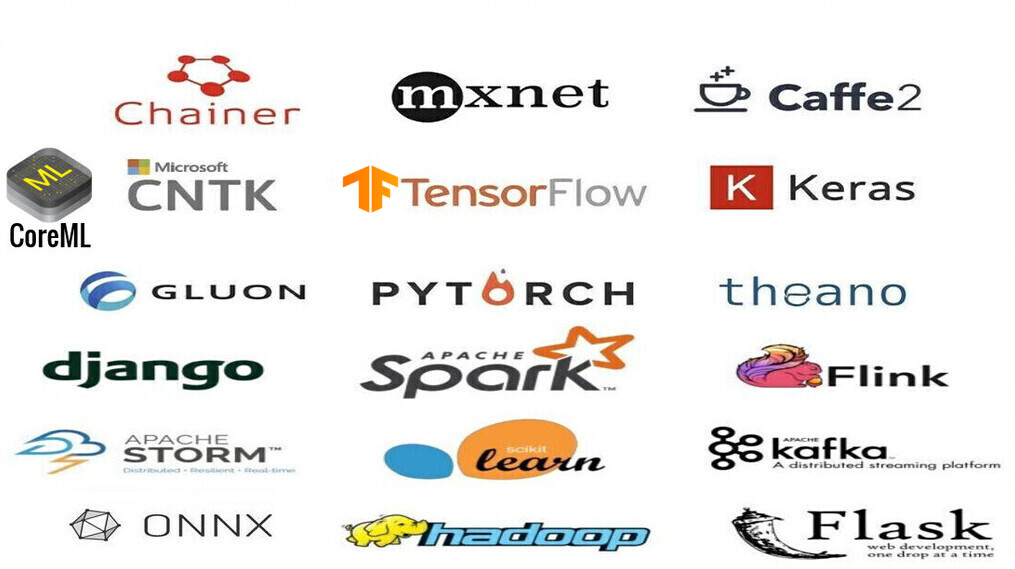
Machine Learning/Deep Learning Frameworks.
Learning Resources for ML
Machine Learning is a branch of artificial intelligence (AI) focused on building apps using algorithms that learn from data models and improve their accuracy over time without needing to be programmed.
Machine Learning by Stanford University from Coursera
AWS Training and Certification for Machine Learning (ML) Courses
Machine Learning Scholarship Program for Microsoft Azure from Udacity
Microsoft Certified: Azure Data Scientist Associate
Microsoft Certified: Azure AI Engineer Associate
Azure Machine Learning training and deployment
Learning Machine learning and artificial intelligence from Google Cloud Training
Machine Learning Crash Course for Google Cloud
Scheduling Jupyter notebooks on Amazon SageMaker ephemeral instances
How to run Jupyter Notebooks in your Azure Machine Learning workspace
Machine Learning Courses Online from Udemy
Machine Learning Courses Online from Coursera
Learn Machine Learning with Online Courses and Classes from edX
ML Frameworks, Libraries, and Tools
TensorFlow is an end-to-end open source platform for machine learning. It has a comprehensive, flexible ecosystem of tools, libraries and community resources that lets researchers push the state-of-the-art in ML and developers easily build and deploy ML powered applications.
Keras is a high-level neural networks API, written in Python and capable of running on top of TensorFlow, CNTK, or Theano.It was developed with a focus on enabling fast experimentation. It is capable of running on top of TensorFlow, Microsoft Cognitive Toolkit, R, Theano, or PlaidML.
PyTorch is a library for deep learning on irregular input data such as graphs, point clouds, and manifolds. Primarily developed by Facebook's AI Research lab.
Amazon SageMaker is a fully managed service that provides every developer and data scientist with the ability to build, train, and deploy machine learning (ML) models quickly. SageMaker removes the heavy lifting from each step of the machine learning process to make it easier to develop high quality models.
Azure Databricks is a fast and collaborative Apache Spark-based big data analytics service designed for data science and data engineering. Azure Databricks, sets up your Apache Spark environment in minutes, autoscale, and collaborate on shared projects in an interactive workspace. Azure Databricks supports Python, Scala, R, Java, and SQL, as well as data science frameworks and libraries including TensorFlow, PyTorch, and scikit-learn.
Microsoft Cognitive Toolkit (CNTK) is an open-source toolkit for commercial-grade distributed deep learning. It describes neural networks as a series of computational steps via a directed graph. CNTK allows the user to easily realize and combine popular model types such as feed-forward DNNs, convolutional neural networks (CNNs) and recurrent neural networks (RNNs/LSTMs). CNTK implements stochastic gradient descent (SGD, error backpropagation) learning with automatic differentiation and parallelization across multiple GPUs and servers.
Apple CoreML is a framework that helps integrate machine learning models into your app. Core ML provides a unified representation for all models. Your app uses Core ML APIs and user data to make predictions, and to train or fine-tune models, all on the user's device. A model is the result of applying a machine learning algorithm to a set of training data. You use a model to make predictions based on new input data.
Tensorflow_macOS is a Mac-optimized version of TensorFlow and TensorFlow Addons for macOS 11.0+ accelerated using Apple's ML Compute framework.
Apache OpenNLP is an open-source library for a machine learning based toolkit used in the processing of natural language text. It features an API for use cases like Named Entity Recognition, Sentence Detection, POS(Part-Of-Speech) tagging, Tokenization Feature extraction, Chunking, Parsing, and Coreference resolution.
Apache Airflow is an open-source workflow management platform created by the community to programmatically author, schedule and monitor workflows. Install. Principles. Scalable. Airflow has a modular architecture and uses a message queue to orchestrate an arbitrary number of workers. Airflow is ready to scale to infinity.
Open Neural Network Exchange(ONNX) is an open ecosystem that empowers AI developers to choose the right tools as their project evolves. ONNX provides an open source format for AI models, both deep learning and traditional ML. It defines an extensible computation graph model, as well as definitions of built-in operators and standard data types.
Apache MXNet is a deep learning framework designed for both efficiency and flexibility. It allows you to mix symbolic and imperative programming to maximize efficiency and productivity. At its core, MXNet contains a dynamic dependency scheduler that automatically parallelizes both symbolic and imperative operations on the fly. A graph optimization layer on top of that makes symbolic execution fast and memory efficient. MXNet is portable and lightweight, scaling effectively to multiple GPUs and multiple machines. Support for Python, R, Julia, Scala, Go, Javascript and more.
AutoGluon is toolkit for Deep learning that automates machine learning tasks enabling you to easily achieve strong predictive performance in your applications. With just a few lines of code, you can train and deploy high-accuracy deep learning models on tabular, image, and text data.
Anaconda is a very popular Data Science platform for machine learning and deep learning that enables users to develop models, train them, and deploy them.
PlaidML is an advanced and portable tensor compiler for enabling deep learning on laptops, embedded devices, or other devices where the available computing hardware is not well supported or the available software stack contains unpalatable license restrictions.
OpenCV is a highly optimized library with focus on real-time computer vision applications. The C++, Python, and Java interfaces support Linux, MacOS, Windows, iOS, and Android.
Scikit-Learn is a Python module for machine learning built on top of SciPy, NumPy, and matplotlib, making it easier to apply robust and simple implementations of many popular machine learning algorithms.
Weka is an open source machine learning software that can be accessed through a graphical user interface, standard terminal applications, or a Java API. It is widely used for teaching, research, and industrial applications, contains a plethora of built-in tools for standard machine learning tasks, and additionally gives transparent access to well-known toolboxes such as scikit-learn, R, and Deeplearning4j.
Caffe is a deep learning framework made with expression, speed, and modularity in mind. It is developed by Berkeley AI Research (BAIR)/The Berkeley Vision and Learning Center (BVLC) and community contributors.
Theano is a Python library that allows you to define, optimize, and evaluate mathematical expressions involving multi-dimensional arrays efficiently including tight integration with NumPy.
nGraph is an open source C++ library, compiler and runtime for Deep Learning. The nGraph Compiler aims to accelerate developing AI workloads using any deep learning framework and deploying to a variety of hardware targets.It provides the freedom, performance, and ease-of-use to AI developers.
NVIDIA cuDNN is a GPU-accelerated library of primitives for deep neural networks. cuDNN provides highly tuned implementations for standard routines such as forward and backward convolution, pooling, normalization, and activation layers. cuDNN accelerates widely used deep learning frameworks, including Caffe2, Chainer, Keras, MATLAB, MxNet, PyTorch, and TensorFlow.
Jupyter Notebook is an open-source web application that allows you to create and share documents that contain live code, equations, visualizations and narrative text. Jupyter is used widely in industries that do data cleaning and transformation, numerical simulation, statistical modeling, data visualization, data science, and machine learning.
Apache Spark is a unified analytics engine for large-scale data processing. It provides high-level APIs in Scala, Java, Python, and R, and an optimized engine that supports general computation graphs for data analysis. It also supports a rich set of higher-level tools including Spark SQL for SQL and DataFrames, MLlib for machine learning, GraphX for graph processing, and Structured Streaming for stream processing.
Apache Spark Connector for SQL Server and Azure SQL is a high-performance connector that enables you to use transactional data in big data analytics and persists results for ad-hoc queries or reporting. The connector allows you to use any SQL database, on-premises or in the cloud, as an input data source or output data sink for Spark jobs.
Apache PredictionIO is an open source machine learning framework for developers, data scientists, and end users. It supports event collection, deployment of algorithms, evaluation, querying predictive results via REST APIs. It is based on scalable open source services like Hadoop, HBase (and other DBs), Elasticsearch, Spark and implements what is called a Lambda Architecture.
Cluster Manager for Apache Kafka(CMAK) is a tool for managing Apache Kafka clusters.
BigDL is a distributed deep learning library for Apache Spark. With BigDL, users can write their deep learning applications as standard Spark programs, which can directly run on top of existing Spark or Hadoop clusters.
Eclipse Deeplearning4J (DL4J) is a set of projects intended to support all the needs of a JVM-based(Scala, Kotlin, Clojure, and Groovy) deep learning application. This means starting with the raw data, loading and preprocessing it from wherever and whatever format it is in to building and tuning a wide variety of simple and complex deep learning networks.
Tensorman is a utility for easy management of Tensorflow containers by developed by System76.Tensorman allows Tensorflow to operate in an isolated environment that is contained from the rest of the system. This virtual environment can operate independent of the base system, allowing you to use any version of Tensorflow on any version of a Linux distribution that supports the Docker runtime.
Numba is an open source, NumPy-aware optimizing compiler for Python sponsored by Anaconda, Inc. It uses the LLVM compiler project to generate machine code from Python syntax. Numba can compile a large subset of numerically-focused Python, including many NumPy functions. Additionally, Numba has support for automatic parallelization of loops, generation of GPU-accelerated code, and creation of ufuncs and C callbacks.
Chainer is a Python-based deep learning framework aiming at flexibility. It provides automatic differentiation APIs based on the define-by-run approach (dynamic computational graphs) as well as object-oriented high-level APIs to build and train neural networks. It also supports CUDA/cuDNN using CuPy for high performance training and inference.
XGBoost is an optimized distributed gradient boosting library designed to be highly efficient, flexible and portable. It implements machine learning algorithms under the Gradient Boosting framework. XGBoost provides a parallel tree boosting (also known as GBDT, GBM) that solve many data science problems in a fast and accurate way. It supports distributed training on multiple machines, including AWS, GCE, Azure, and Yarn clusters. Also, it can be integrated with Flink, Spark and other cloud dataflow systems.
cuML is a suite of libraries that implement machine learning algorithms and mathematical primitives functions that share compatible APIs with other RAPIDS projects. cuML enables data scientists, researchers, and software engineers to run traditional tabular ML tasks on GPUs without going into the details of CUDA programming. In most cases, cuML's Python API matches the API from scikit-learn.
CUDA Development


CUDA Toolkit. Source: NVIDIA Developer CUDA
CUDA Learning Resources
CUDA is a parallel computing platform and programming model developed by NVIDIA for general computing on graphical processing units (GPUs). With CUDA, developers are able to dramatically speed up computing applications by harnessing the power of GPUs. In GPU-accelerated applications, the sequential part of the workload runs on the CPU, which is optimized for single-threaded. The compute intensive portion of the application runs on thousands of GPU cores in parallel. When using CUDA, developers can program in popular languages such as C, C++, Fortran, Python and MATLAB.
CUDA GPU support for TensorFlow
NVIDIA Deep Learning cuDNN Documentation
NVIDIA GPU Cloud Documentation
NVIDIA NGC is a hub for GPU-optimized software for deep learning, machine learning, and high-performance computing (HPC) workloads.
NVIDIA NGC Containers is a registry that provides researchers, data scientists, and developers with simple access to a comprehensive catalog of GPU-accelerated software for AI, machine learning and HPC. These containers take full advantage of NVIDIA GPUs on-premises and in the cloud.
CUDA Tools Libraries, and Frameworks
CUDA Toolkit is a collection of tools & libraries that provide a development environment for creating high performance GPU-accelerated applications. The CUDA Toolkit allows you can develop, optimize, and deploy your applications on GPU-accelerated embedded systems, desktop workstations, enterprise data centers, cloud-based platforms and HPC supercomputers. The toolkit includes GPU-accelerated libraries, debugging and optimization tools, a C/C++ compiler, and a runtime library to build and deploy your application on major architectures including x86, Arm and POWER.
NVIDIA cuDNN is a GPU-accelerated library of primitives for deep neural networks. cuDNN provides highly tuned implementations for standard routines such as forward and backward convolution, pooling, normalization, and activation layers. cuDNN accelerates widely used deep learning frameworks, including Caffe2, Chainer, Keras, MATLAB, MxNet, PyTorch, and TensorFlow.
CUDA-X HPC is a collection of libraries, tools, compilers and APIs that help developers solve the world's most challenging problems. CUDA-X HPC includes highly tuned kernels essential for high-performance computing (HPC).
NVIDIA Container Toolkit is a collection of tools & libraries that allows users to build and run GPU accelerated Docker containers. The toolkit includes a container runtime library and utilities to automatically configure containers to leverage NVIDIA GPUs.
Minkowski Engine is an auto-differentiation library for sparse tensors. It supports all standard neural network layers such as convolution, pooling, unpooling, and broadcasting operations for sparse tensors.
CUTLASS is a collection of CUDA C++ template abstractions for implementing high-performance matrix-multiplication (GEMM) at all levels and scales within CUDA. It incorporates strategies for hierarchical decomposition and data movement similar to those used to implement cuBLAS.
CUB is a cooperative primitives for CUDA C++ kernel authors.
Tensorman is a utility for easy management of Tensorflow containers by developed by System76.Tensorman allows Tensorflow to operate in an isolated environment that is contained from the rest of the system. This virtual environment can operate independent of the base system, allowing you to use any version of Tensorflow on any version of a Linux distribution that supports the Docker runtime.
Numba is an open source, NumPy-aware optimizing compiler for Python sponsored by Anaconda, Inc. It uses the LLVM compiler project to generate machine code from Python syntax. Numba can compile a large subset of numerically-focused Python, including many NumPy functions. Additionally, Numba has support for automatic parallelization of loops, generation of GPU-accelerated code, and creation of ufuncs and C callbacks.
Chainer is a Python-based deep learning framework aiming at flexibility. It provides automatic differentiation APIs based on the define-by-run approach (dynamic computational graphs) as well as object-oriented high-level APIs to build and train neural networks. It also supports CUDA/cuDNN using CuPy for high performance training and inference.
CuPy is an implementation of NumPy-compatible multi-dimensional array on CUDA. CuPy consists of the core multi-dimensional array class, cupy.ndarray, and many functions on it. It supports a subset of numpy.ndarray interface.
CatBoost is a fast, scalable, high performance Gradient Boosting on Decision Trees library, used for ranking, classification, regression and other machine learning tasks for Python, R, Java, C++. Supports computation on CPU and GPU.
cuDF is a GPU DataFrame library for loading, joining, aggregating, filtering, and otherwise manipulating data. cuDF provides a pandas-like API that will be familiar to data engineers & data scientists, so they can use it to easily accelerate their workflows without going into the details of CUDA programming.
cuML is a suite of libraries that implement machine learning algorithms and mathematical primitives functions that share compatible APIs with other RAPIDS projects. cuML enables data scientists, researchers, and software engineers to run traditional tabular ML tasks on GPUs without going into the details of CUDA programming. In most cases, cuML's Python API matches the API from scikit-learn.
ArrayFire is a general-purpose library that simplifies the process of developing software that targets parallel and massively-parallel architectures including CPUs, GPUs, and other hardware acceleration devices.
Thrust is a C++ parallel programming library which resembles the C++ Standard Library. Thrust's high-level interface greatly enhances programmer productivity while enabling performance portability between GPUs and multicore CPUs.
AresDB is a GPU-powered real-time analytics storage and query engine. It features low query latency, high data freshness and highly efficient in-memory and on disk storage management.
Arraymancer is a tensor (N-dimensional array) project in Nim. The main focus is providing a fast and ergonomic CPU, Cuda and OpenCL ndarray library on which to build a scientific computing ecosystem.
Kintinuous is a real-time dense visual SLAM system capable of producing high quality globally consistent point and mesh reconstructions over hundreds of metres in real-time with only a low-cost commodity RGB-D sensor.
GraphVite is a general graph embedding engine, dedicated to high-speed and large-scale embedding learning in various applications.
MATLAB Development

MATLAB Learning Resources
MATLAB is a programming language that does numerical computing such as expressing matrix and array mathematics directly.
MATLAB and Simulink Training from MATLAB Academy
MathWorks Certification Program
MATLAB Online Courses from Udemy
MATLAB Online Courses from Coursera
MATLAB Online Courses from edX
Setting Up Git Source Control with MATLAB & Simulink
Pull, Push and Fetch Files with Git with MATLAB & Simulink
Create New Repository with MATLAB & Simulink
PRMLT is Matlab code for machine learning algorithms in the PRML book.
MATLAB Tools, Libraries, Frameworks
MATLAB and Simulink Services & Applications List
MATLAB in the Cloud is a service that allows you to run in cloud environments from MathWorks Cloud to Public Clouds including AWS and Azure.
MATLAB Online™ is a service that allows to users to uilitize MATLAB and Simulink through a web browser such as Google Chrome.
Simulink is a block diagram environment for Model-Based Design. It supports simulation, automatic code generation, and continuous testing of embedded systems.
Simulink Online™ is a service that provides access to Simulink through your web browser.
MATLAB Drive™ is a service that gives you the ability to store, access, and work with your files from anywhere.
MATLAB Parallel Server™ is a tool that lets you scale MATLAB® programs and Simulink® simulations to clusters and clouds. You can prototype your programs and simulations on the desktop and then run them on clusters and clouds without recoding. MATLAB Parallel Server supports batch jobs, interactive parallel computations, and distributed computations with large matrices.
MATLAB Schemer is a MATLAB package makes it easy to change the color scheme (theme) of the MATLAB display and GUI.
LRSLibrary is a Low-Rank and Sparse Tools for Background Modeling and Subtraction in Videos. The library was designed for moving object detection in videos, but it can be also used for other computer vision and machine learning problems.
Image Processing Toolbox™ is a tool that provides a comprehensive set of reference-standard algorithms and workflow apps for image processing, analysis, visualization, and algorithm development. You can perform image segmentation, image enhancement, noise reduction, geometric transformations, image registration, and 3D image processing.
Computer Vision Toolbox™ is a tool that provides algorithms, functions, and apps for designing and testing computer vision, 3D vision, and video processing systems. You can perform object detection and tracking, as well as feature detection, extraction, and matching. You can automate calibration workflows for single, stereo, and fisheye cameras. For 3D vision, the toolbox supports visual and point cloud SLAM, stereo vision, structure from motion, and point cloud processing.
Statistics and Machine Learning Toolbox™ is a tool that provides functions and apps to describe, analyze, and model data. You can use descriptive statistics, visualizations, and clustering for exploratory data analysis; fit probability distributions to data; generate random numbers for Monte Carlo simulations, and perform hypothesis tests. Regression and classification algorithms let you draw inferences from data and build predictive models either interactively, using the Classification and Regression Learner apps, or programmatically, using AutoML.
Lidar Toolbox™ is a tool that provides algorithms, functions, and apps for designing, analyzing, and testing lidar processing systems. You can perform object detection and tracking, semantic segmentation, shape fitting, lidar registration, and obstacle detection. Lidar Toolbox supports lidar-camera cross calibration for workflows that combine computer vision and lidar processing.
Mapping Toolbox™ is a tool that provides algorithms and functions for transforming geographic data and creating map displays. You can visualize your data in a geographic context, build map displays from more than 60 map projections, and transform data from a variety of sources into a consistent geographic coordinate system.
UAV Toolbox is an application that provides tools and reference applications for designing, simulating, testing, and deploying unmanned aerial vehicle (UAV) and drone applications. You can design autonomous flight algorithms, UAV missions, and flight controllers. The Flight Log Analyzer app lets you interactively analyze 3D flight paths, telemetry information, and sensor readings from common flight log formats.
Parallel Computing Toolbox™ is a tool that lets you solve computationally and data-intensive problems using multicore processors, GPUs, and computer clusters. High-level constructs such as parallel for-loops, special array types, and parallelized numerical algorithms enable you to parallelize MATLAB® applications without CUDA or MPI programming. The toolbox lets you use parallel-enabled functions in MATLAB and other toolboxes. You can use the toolbox with Simulink® to run multiple simulations of a model in parallel. Programs and models can run in both interactive and batch modes.
Partial Differential Equation Toolbox™ is a tool that provides functions for solving structural mechanics, heat transfer, and general partial differential equations (PDEs) using finite element analysis.
ROS Toolbox is a tool that provides an interface connecting MATLAB® and Simulink® with the Robot Operating System (ROS and ROS 2), enabling you to create a network of ROS nodes. The toolbox includes MATLAB functions and Simulink blocks to import, analyze, and play back ROS data recorded in rosbag files. You can also connect to a live ROS network to access ROS messages.
Robotics Toolbox™ provides a toolbox that brings robotics specific functionality(designing, simulating, and testing manipulators, mobile robots, and humanoid robots) to MATLAB, exploiting the native capabilities of MATLAB (linear algebra, portability, graphics). The toolbox also supports mobile robots with functions for robot motion models (bicycle), path planning algorithms (bug, distance transform, D*, PRM), kinodynamic planning (lattice, RRT), localization (EKF, particle filter), map building (EKF) and simultaneous localization and mapping (EKF), and a Simulink model a of non-holonomic vehicle. The Toolbox also including a detailed Simulink model for a quadrotor flying robot.
Deep Learning Toolbox™ is a tool that provides a framework for designing and implementing deep neural networks with algorithms, pretrained models, and apps. You can use convolutional neural networks (ConvNets, CNNs) and long short-term memory (LSTM) networks to perform classification and regression on image, time-series, and text data. You can build network architectures such as generative adversarial networks (GANs) and Siamese networks using automatic differentiation, custom training loops, and shared weights. With the Deep Network Designer app, you can design, analyze, and train networks graphically. It can exchange models with TensorFlow™ and PyTorch through the ONNX format and import models from TensorFlow-Keras and Caffe. The toolbox supports transfer learning with DarkNet-53, ResNet-50, NASNet, SqueezeNet and many other pretrained models.
Reinforcement Learning Toolbox™ is a tool that provides an app, functions, and a Simulink® block for training policies using reinforcement learning algorithms, including DQN, PPO, SAC, and DDPG. You can use these policies to implement controllers and decision-making algorithms for complex applications such as resource allocation, robotics, and autonomous systems.
Deep Learning HDL Toolbox™ is a tool that provides functions and tools to prototype and implement deep learning networks on FPGAs and SoCs. It provides pre-built bitstreams for running a variety of deep learning networks on supported Xilinx® and Intel® FPGA and SoC devices. Profiling and estimation tools let you customize a deep learning network by exploring design, performance, and resource utilization tradeoffs.
Model Predictive Control Toolbox™ is a tool that provides functions, an app, and Simulink® blocks for designing and simulating controllers using linear and nonlinear model predictive control (MPC). The toolbox lets you specify plant and disturbance models, horizons, constraints, and weights. By running closed-loop simulations, you can evaluate controller performance.
Vision HDL Toolbox™ is a tool that provides pixel-streaming algorithms for the design and implementation of vision systems on FPGAs and ASICs. It provides a design framework that supports a diverse set of interface types, frame sizes, and frame rates. The image processing, video, and computer vision algorithms in the toolbox use an architecture appropriate for HDL implementations.
SoC Blockset™ is a tool that provides Simulink® blocks and visualization tools for modeling, simulating, and analyzing hardware and software architectures for ASICs, FPGAs, and systems on a chip (SoC). You can build your system architecture using memory models, bus models, and I/O models, and simulate the architecture together with the algorithms.
Wireless HDL Toolbox™ is a tool that provides pre-verified, hardware-ready Simulink® blocks and subsystems for developing 5G, LTE, and custom OFDM-based wireless communication applications. It includes reference applications, IP blocks, and gateways between frame and sample-based processing.
ThingSpeak™ is an IoT analytics service that allows you to aggregate, visualize, and analyze live data streams in the cloud. ThingSpeak provides instant visualizations of data posted by your devices to ThingSpeak. With the ability to execute MATLAB® code in ThingSpeak, you can perform online analysis and process data as it comes in. ThingSpeak is often used for prototyping and proof-of-concept IoT systems that require analytics.
SEA-MAT is a collaborative effort to organize and distribute Matlab tools for the Oceanographic Community.
Gramm is a complete data visualization toolbox for Matlab. It provides an easy to use and high-level interface to produce publication-quality plots of complex data with varied statistical visualizations. Gramm is inspired by R's ggplot2 library.
hctsa is a software package for running highly comparative time-series analysis using Matlab.
Plotly is a Graphing Library for MATLAB.
YALMIP is a MATLAB toolbox for optimization modeling.
GNU Octave is a high-level interpreted language, primarily intended for numerical computations. It provides capabilities for the numerical solution of linear and nonlinear problems, and for performing other numerical experiments. It also provides extensive graphics capabilities for data visualization and manipulation.
C/C++ Development

C/C++ Learning Resources
C++ is a cross-platform language that can be used to build high-performance applications developed by Bjarne Stroustrup, as an extension to the C language.
C is a general-purpose, high-level language that was originally developed by Dennis M. Ritchie to develop the UNIX operating system at Bell Labs. It supports structured programming, lexical variable scope, and recursion, with a static type system. C also provides constructs that map efficiently to typical machine instructions, which makes it one was of the most widely used programming languages today.
Embedded C is a set of language extensions for the C programming language by the C Standards Committee to address issues that exist between C extensions for different embedded systems. The extensions hep enhance microprocessor features such as fixed-point arithmetic, multiple distinct memory banks, and basic I/O operations. This makes Embedded C the most popular embedded software language in the world.
C & C++ Developer Tools from JetBrains
Open source C++ libraries on cppreference.com
C++ Tools and Libraries Articles
Introduction C++ Education course on Google Developers
C and C++ Coding Style Guide by OpenTitan
Learn C : An Interactive C Tutorial
C++ Online Training Courses on LinkedIn Learning
Learn C Programming Online Courses on edX
Learn C++ with Online Courses on edX
Coding for Everyone: C and C++ course on Coursera
C++ For C Programmers on Coursera
Basics of Embedded C Programming for Beginners on Udemy
C++ For Programmers Course on Udacity
C++ Fundamentals Course on Pluralsight
Introduction to C++ on MIT Free Online Course Materials
Introduction to C++ for Programmers | Harvard
Online C Courses | Harvard University
C/C++ Tools and Frameworks
C++ Client Libraries for Google Cloud Services
Visual Studio is an integrated development environment (IDE) from Microsoft; which is a feature-rich application that can be used for many aspects of software development. Visual Studio makes it easy to edit, debug, build, and publish your app. By using Microsoft software development platforms such as Windows API, Windows Forms, Windows Presentation Foundation, and Windows Store.
Visual Studio Code is a code editor redefined and optimized for building and debugging modern web and cloud applications.
Vcpkg is a C++ Library Manager for Windows, Linux, and MacOS.
ReSharper C++ is a Visual Studio Extension for C++ developers developed by JetBrains.
AppCode is constantly monitoring the quality of your code. It warns you of errors and smells and suggests quick-fixes to resolve them automatically. AppCode provides lots of code inspections for Objective-C, Swift, C/C++, and a number of code inspections for other supported languages. All code inspections are run on the fly.
CLion is a cross-platform IDE for C and C++ developers developed by JetBrains.
Code::Blocks is a free C/C++ and Fortran IDE built to meet the most demanding needs of its users. It is designed to be very extensible and fully configurable. Built around a plugin framework, Code::Blocks can be extended with plugins.
CppSharp is a tool and set of libraries which facilitates the usage of native C/C++ code with the .NET ecosystem. It consumes C/C++ header and library files and generates the necessary glue code to surface the native API as a managed API. Such an API can be used to consume an existing native library in your managed code or add managed scripting support to a native codebase.
Conan is an Open Source Package Manager for C++ development and dependency management into the 21st century and on par with the other development ecosystems.
High Performance Computing (HPC) SDK is a comprehensive toolbox for GPU accelerating HPC modeling and simulation applications. It includes the C, C++, and Fortran compilers, libraries, and analysis tools necessary for developing HPC applications on the NVIDIA platform.
Thrust is a C++ parallel programming library which resembles the C++ Standard Library. Thrust's high-level interface greatly enhances programmer productivity while enabling performance portability between GPUs and multicore CPUs. Interoperability with established technologies such as CUDA, TBB, and OpenMP integrates with existing software.
Boost is an educational opportunity focused on cutting-edge C++. Boost has been a participant in the annual Google Summer of Code since 2007, in which students develop their skills by working on Boost Library development.
Automake is a tool for automatically generating Makefile.in files compliant with the GNU Coding Standards. Automake requires the use of GNU Autoconf.
Cmake is an open-source, cross-platform family of tools designed to build, test and package software. CMake is used to control the software compilation process using simple platform and compiler independent configuration files, and generate native makefiles and workspaces that can be used in the compiler environment of your choice.
GDB is a debugger, that allows you to see what is going on `inside' another program while it executes or what another program was doing at the moment it crashed.
GCC is a compiler Collection that includes front ends for C, C++, Objective-C, Fortran, Ada, Go, and D, as well as libraries for these languages.
GSL is a numerical library for C and C++ programmers. It is free software under the GNU General Public License. The library provides a wide range of mathematical routines such as random number generators, special functions and least-squares fitting. There are over 1000 functions in total with an extensive test suite.
OpenGL Extension Wrangler Library (GLEW) is a cross-platform open-source C/C++ extension loading library. GLEW provides efficient run-time mechanisms for determining which OpenGL extensions are supported on the target platform.
Libtool is a generic library support script that hides the complexity of using shared libraries behind a consistent, portable interface. To use Libtool, add the new generic library building commands to your Makefile, Makefile.in, or Makefile.am.
Maven is a software project management and comprehension tool. Based on the concept of a project object model (POM), Maven can manage a project's build, reporting and documentation from a central piece of information.
TAU (Tuning And Analysis Utilities) is capable of gathering performance information through instrumentation of functions, methods, basic blocks, and statements as well as event-based sampling. All C++ language features are supported including templates and namespaces.
Clang is a production quality C, Objective-C, C++ and Objective-C++ compiler when targeting X86-32, X86-64, and ARM (other targets may have caveats, but are usually easy to fix). Clang is used in production to build performance-critical software like Google Chrome or Firefox.
OpenCV is a highly optimized library with focus on real-time applications. Cross-Platform C++, Python and Java interfaces support Linux, MacOS, Windows, iOS, and Android.
Libcu++ is the NVIDIA C++ Standard Library for your entire system. It provides a heterogeneous implementation of the C++ Standard Library that can be used in and between CPU and GPU code.
ANTLR (ANother Tool for Language Recognition) is a powerful parser generator for reading, processing, executing, or translating structured text or binary files. It's widely used to build languages, tools, and frameworks. From a grammar, ANTLR generates a parser that can build parse trees and also generates a listener interface that makes it easy to respond to the recognition of phrases of interest.
Oat++ is a light and powerful C++ web framework for highly scalable and resource-efficient web application. It's zero-dependency and easy-portable.
JavaCPP is a program that provides efficient access to native C++ inside Java, not unlike the way some C/C++ compilers interact with assembly language.
Cython is a language that makes writing C extensions for Python as easy as Python itself. Cython is based on Pyrex, but supports more cutting edge functionality and optimizations such as calling C functions and declaring C types on variables and class attributes.
Spdlog is a very fast, header-only/compiled, C++ logging library.
Infer is a static analysis tool for Java, C++, Objective-C, and C. Infer is written in OCaml.
Contribute
- If would you like to contribute to this guide simply make a Pull Request.
License
Distributed under the Creative Commons Attribution 4.0 International (CC BY 4.0) Public License.

